Alfred Reeves, 1829 - 1907,
microphotograph slide maker "A.R."
by Brian Stevenson
last updated November, 2025
The introduction of commercial
microphotography in the mid-1800s caused quite a stir among the public. While J.B. Dancer is credited with the invention and is now undoubtedly the most famous producer of early microphotographs, numerous other photographers quickly took up production of miniscule photographs designed for viewing through a microscope. One of these was Alfred Reeves, better known to many antique slide
collectors by his initials, "A.R.". His full name appears on a few known microscope slides (Fig. 1). Brian Bracegirdle's Microscopical Mounts and Mounters misprinted the name as "A. Reeve" - the name was written as "Reeves" on all of his slides and in historical records. In the Summer, 2007 issue of Micro Miscellanea, Stanley Warren presented an excellent argument for considering Reeves to be the producer of the many microphotograph slides bearing the initials A.R.
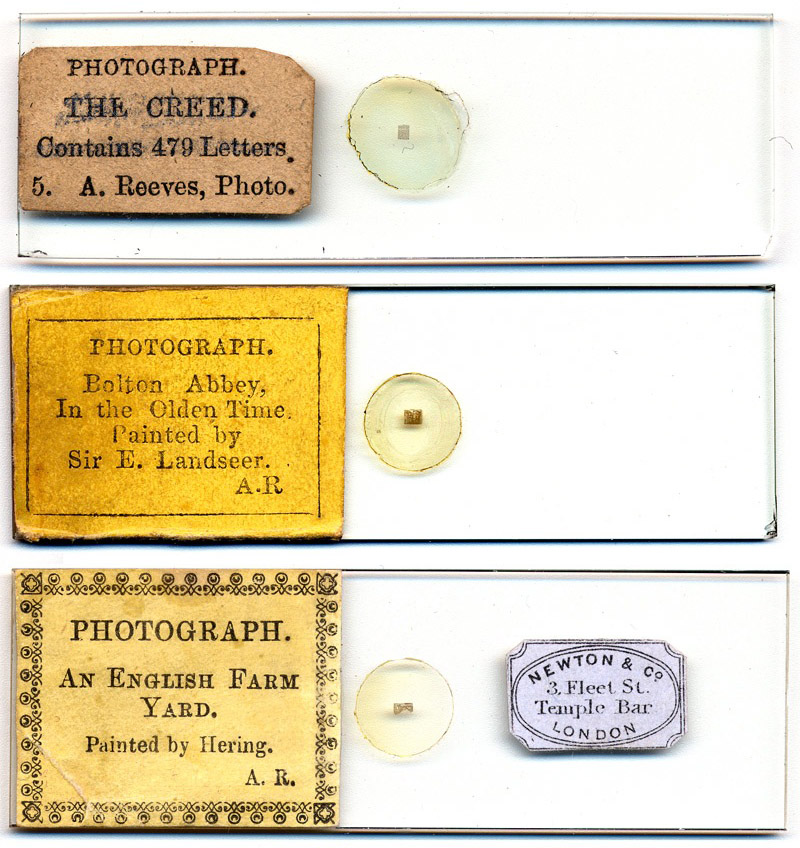
Figure 1. Examples of three label variants used by Alfred Reeves. The upper slide, with Reeves’ name spelled out, is the least common, and is probably the earliest form. Those slides are numbered, while those that bear only Reeves’ initials do not have numbers. The style shown at the bottom is probably the most recent, as it is the most common pattern and is found on the widest variety of microphotographs.
Alfred Reeves featured prominently in an anonymously-written article on microphotographs that was
reprinted in numerous magazines in 1859. Several of those magazines have been digitized, and can be readily found
on the web from such sources as Google Books. Regarding Reeves and his work:
“Mr. Alfred Reeves has recently forwarded to us a specimen of one of
those minute pictures, which consists of a plate containing the portraits of
kings and queens of England since the time of the Conquest. Here, on a space not larger than 1/16
of an inch square, may be perceived a miniature “National Portrait Gallery”
with a portrait of every king and queen surrounding her Majesty, who is
properly made the centre figure of the interesting group.”
A picture of that slide and its
image is shown in Figure 2. From
the publicity he received from the reprinted microphotography article, one
would expect that Alfred Reeves should have become as famous as Dancer. Instead, he possibly gave up on
microphotography by the 1870s, and had definitely taken up a completely different
occupation by 1890.
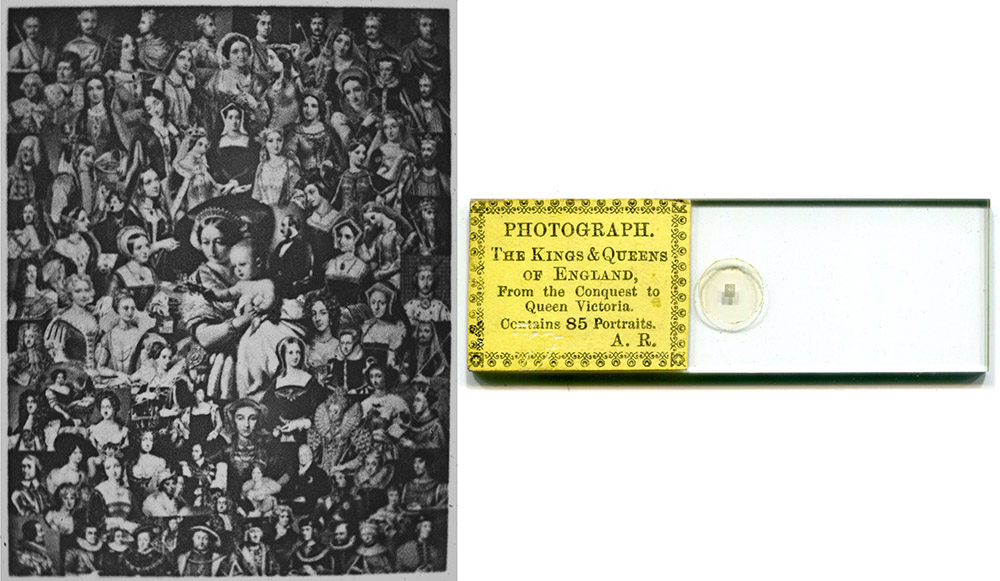
Figure 2A. “Mr. Alfred Reeves has recently forwarded …, on a space not larger than
1/16 of an inch square, … a portrait of every king and queen surrounding her
Majesty”. A competing maker of microphotographs, John C. Stovin, outdid this image by producing a similar montage of rulers from Egbert (802-839) to Victoria.
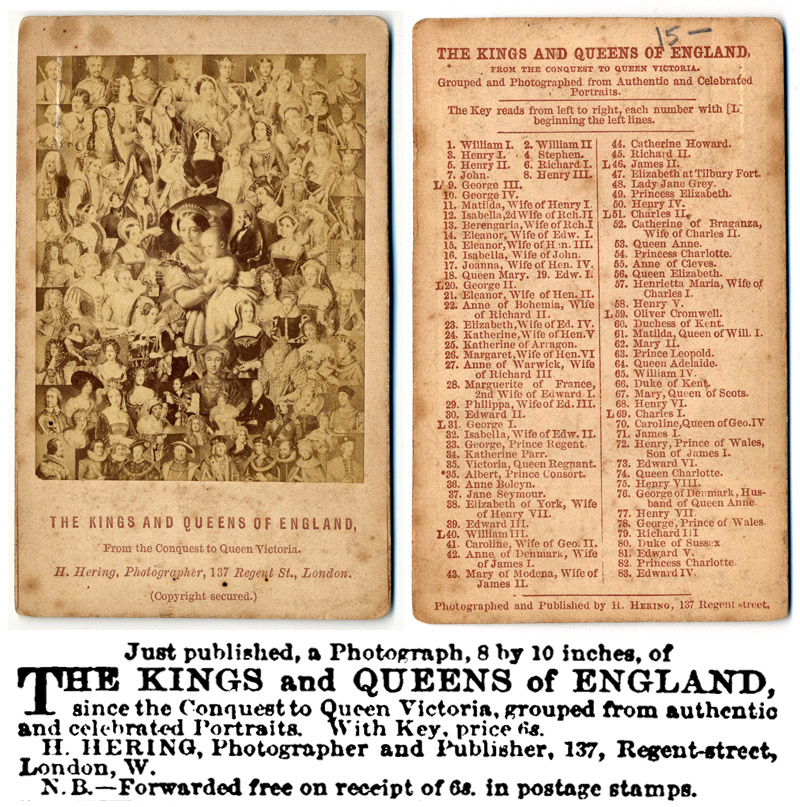
Figure 2B.
A photographer named Henry Hering produced this composite image in 1858, and issued a cdv-sized version of the kings and queens montage in 1862. Front and back views are shown. The illustrated advertisement is from the December 4, 1858 issue of The Athenaeum.

Figure 2C.
Alfred Reeves microphotograph of a five Pound note, which was issued in January, 1859, implying that Reeves was producing microphotographs around that time.
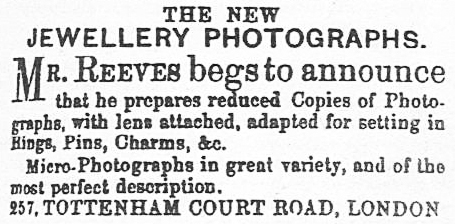
Figure 3A.
An 1861 advertisement from Alfred Reeves, adapted from Warren (2014).

Figure 3B.
1864 notice regarding Alfred Reeves issuing a microphotograph of William Shakespeare's home, from The British Journal of Photography, April 1, 1864.
Alfred Reeves was born in 1829 in Taunton, Somerset, third of three sons of Thomas and Jane/Jean Reeves. By 1841, Alfred, his parents and two brothers had moved to St. Pancras, Middlesex. The 1851 census shows Alfred and elder brother Thomas living with their parents, and both working as "photographic artists". Alfred and Thomas may have worked together at that time. Thomas operated a photographic studio at 498 Oxford Street from at least 1850 (see discussion toward the end of this essay). The brothers may have worked together for quite some time, as I have not located information on Alfred operating a photographic studio of his own in London, other than his microphotograph production shop.
Around 1853, Alfred married a woman named Elizabeth. Letters from Reeves indicate that the couple lived at 36 William Street North, Caledonian Road, London during 1860. In March, 1861, they moved to 257 Tottenham Road, St. Giles, Middlesex.
Microscope slides labeled “A.R.” bear microphotographs of five pound note number 96275, which was issued in January, 1859 (Figure 2C).
An 1861 advertisement from Reeves stated that he “prepares reduced copies of photographs, with lens attached, adapted for setting in rings, pins, charms, &c.” (i.e. stanhopes), as well as his own “micro-photographs in great variety, and of the most perfect description.” (Figure 3A).
Known microphotographs by Reeves which can be dated, such as images of the Royal Family, indicate that he made such slides until at least 1864.
Letters from Alfred Reeves to the managers of the 1861 Exhibition of the Photographic Society of Scotland, in Edinburgh. Reeves shipped a microscope and 24 microphotograph slides to the Exhibition. He listed the titles of the slides, providing important insight on his productions during early 1861:
View of the Houses of Parliament
The Orphans
Shoeing
Orphans’ Dream
Flight of Spirits
Jack on Guard
Laying Down the Law
Her Majesty
Origin of Music
Oh!
Five Pound Note
Cymon and Imphygenia
Salmon and Otter
Emminent Men (115 Portraits)
Emminent Women (105 Portraits)
See-Saw
Not Caught Yet
The Lord’s Prayer
Thine is the Kingdom
Charles Dickens
Albert Smith
May and December
Highland Shepherd’s Home
The Last Return from Duty
Reeves also exhibited “microscopic photographs and microscope” at the 1862 International Exposition in London, and was rewarded with an Honourable Mention. J.B. Dancer exhibited in the same class, and received the same honors. The Photographic Journal wrote of, “ reduced copies of pictures for microscopic examination: the results, although partaking of the character of toys, may yet become of important application. Mr. Reeves (United Kingdom, 3144), Mr. Stovin (United Kingdom, 3163), and M. Dagron (France, 1545) exhibit interesting specimens in this class.”
Elizabeth died shortly after the success of the Exhibition, probably in 1863.
An 1864 notice in The British Journal of Photography stated that Reeves' shop was still at 257 Tottenham Road (Figure 3B).
Alfred re-married in 1866, to Emma Pavey, in Middlesex. However, Emma was a native of Plymouth, Devonshire. Alfred’s older brother, Thomas, operated a photography studio in Plymouth from approximately 1858 through 1867. Alfred took over Thomas' studio during the 1860s, so it is possible that he met Emma in Plymouth, or that their marriage prompted the move to Plymouth.
The Reeves' Plymouth studio was located at 17 Bedford Street, and several known photographs by Alfred carry that address (Figures 5-8). The 1871 census placed Alfred, Emma and their three year old son, William, at 14 John Street, Plymouth.
An 1873 editor's response to a query in The Photographic News stated that Alfred Reeves was still producing microphotographs at that time: “We learn that Mr. A. Reeves, of 17, Bedford Street, Plymouth, produces microscopic photographs for the trade, a couple of examples of his work before us being in all respects satisfactory.”
By 1881, Alfred and family had moved to Luton, Bedfordshire, where Alfred again set up a photographer’s shop. The family home was located at 15 Ebenezer Street, which probably also served as the photographic studio. Luton at that time was a major site for production of straw hats, and the majority of the Reeves’ neighbors worked in that profession. Emma joined in, being recorded as a “bonnet sewer” on the 1881 census.
By 1890, the whole Reeves family was in the straw hat-making business, the 1890 edition of Kelly’s Directory of Bedfordshire listing Alfred as a “straw hat manufacturer”, located at 21 Hastings street. The next year’s national census listed Alfred as a “maker”, Emma as a “finisher” and son William as a “packer” of straw hats. Alfred appears to have kept to this business until his death in 1907.
This information indicates that Alfred Reeves was commercially producing microphotographs by 1859, continuing through the mid-1860s. He remained a professional photographer into the 1880s, although there is no evidence that produced microphotographs throughout that time. It is reasonable to date slides bearing his name or initials from the late 1850s through the early 1870s.
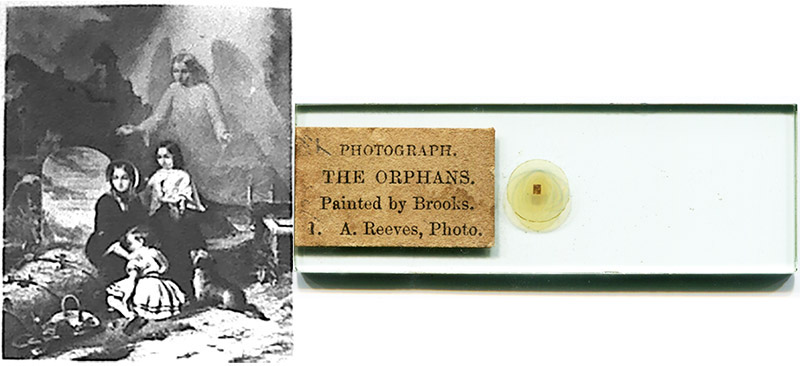
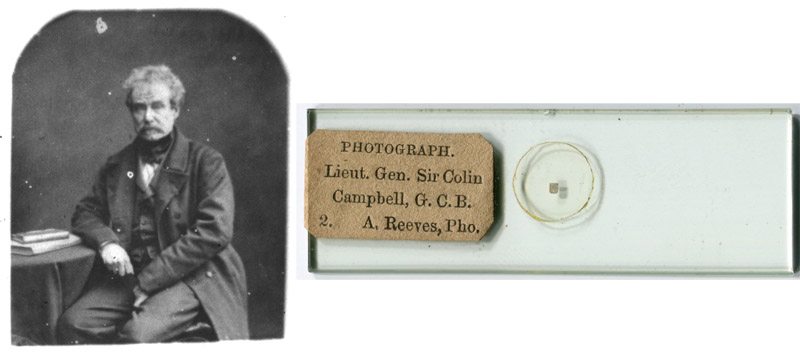
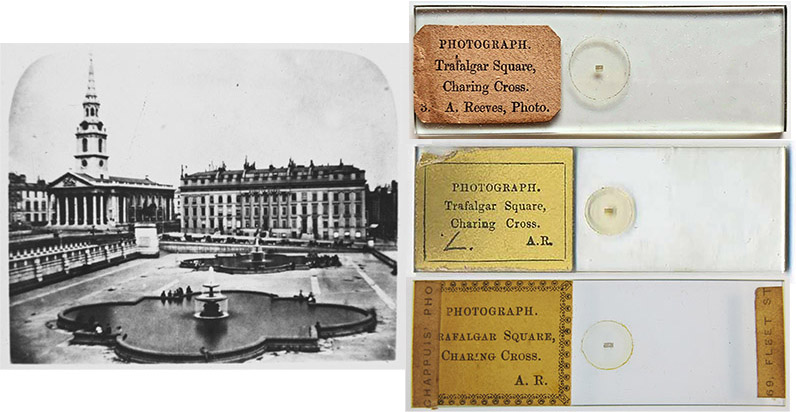

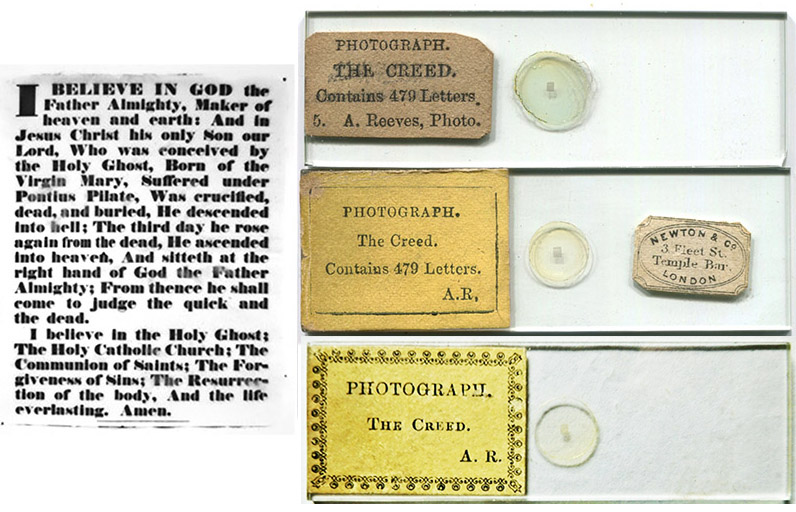

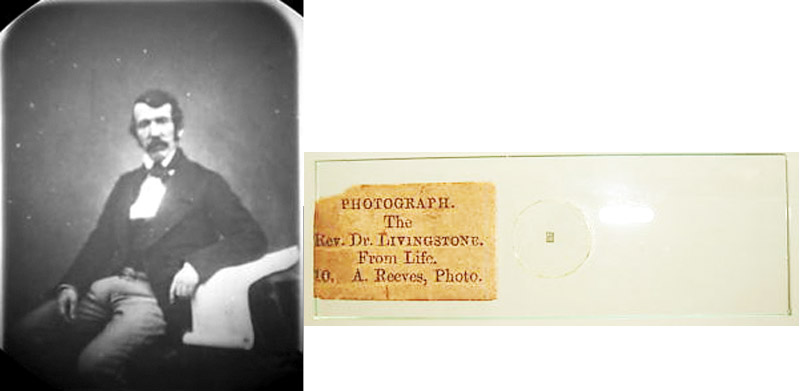
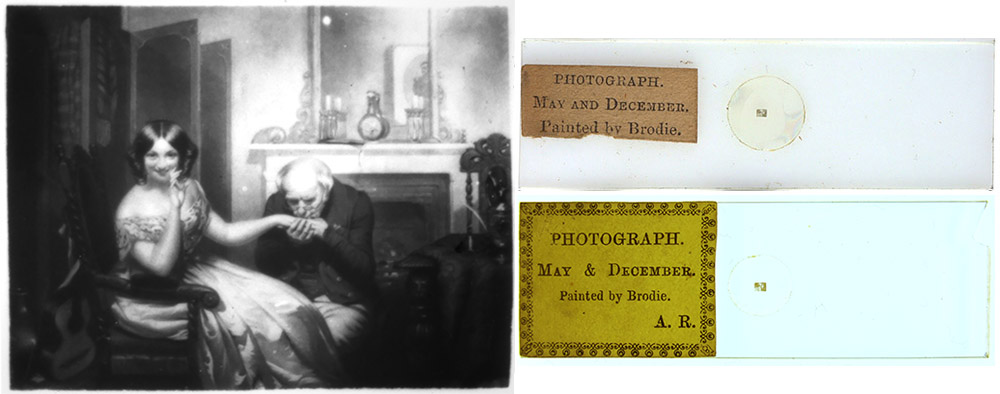
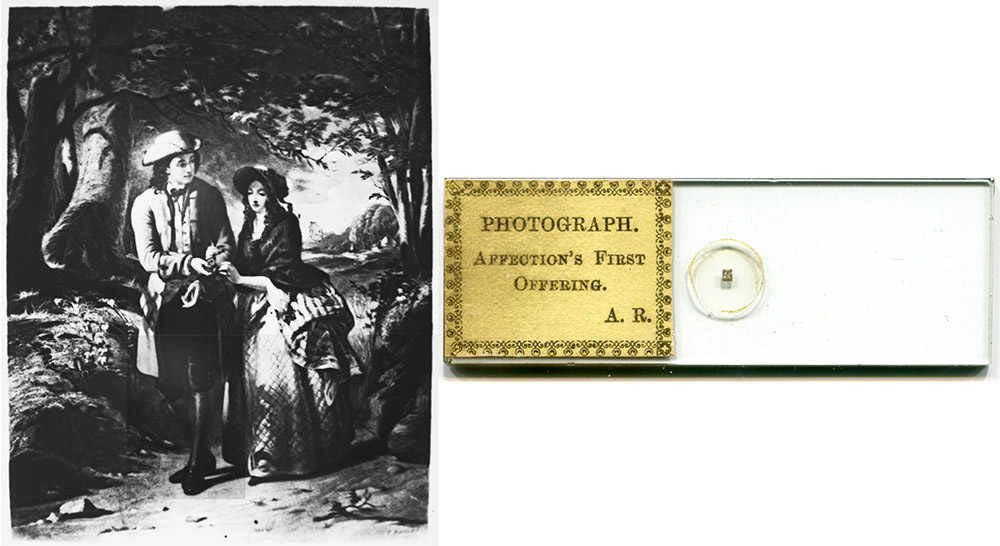

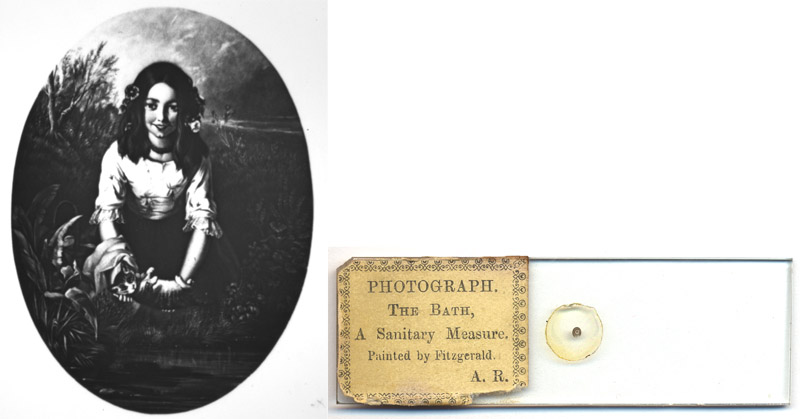
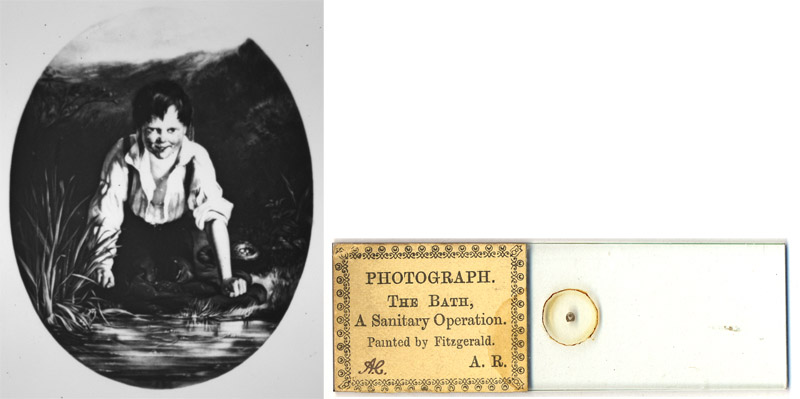
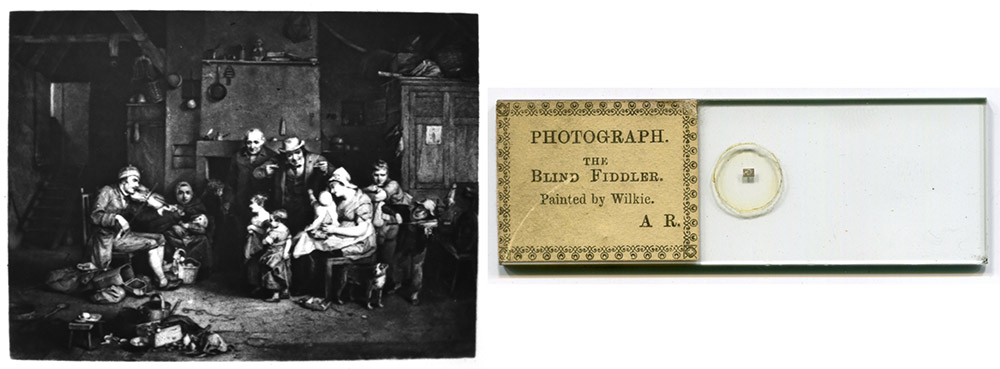
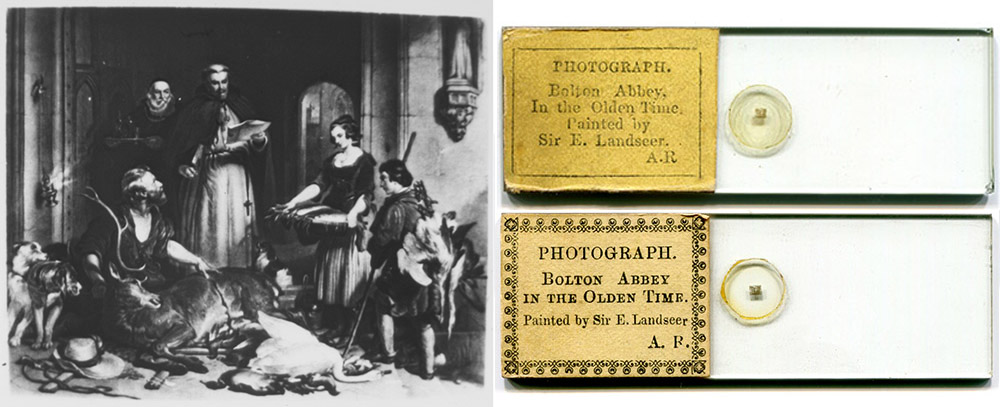



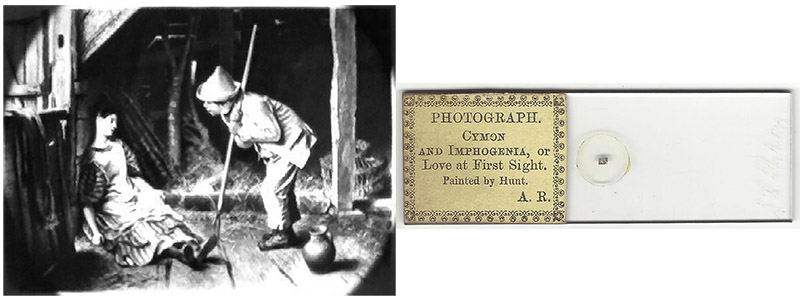
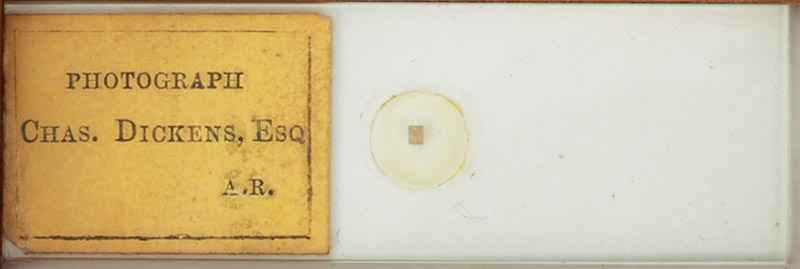
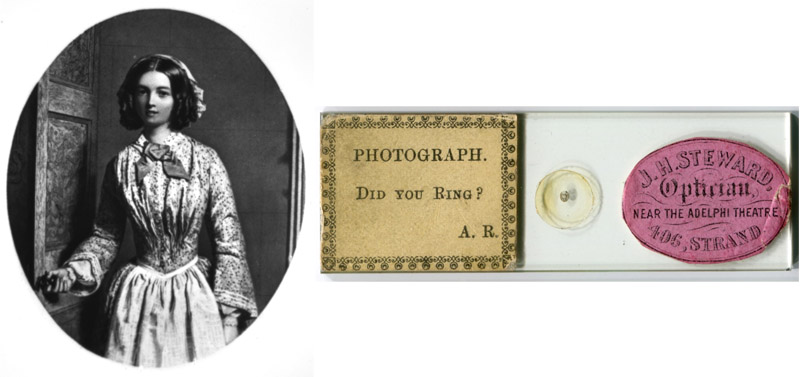

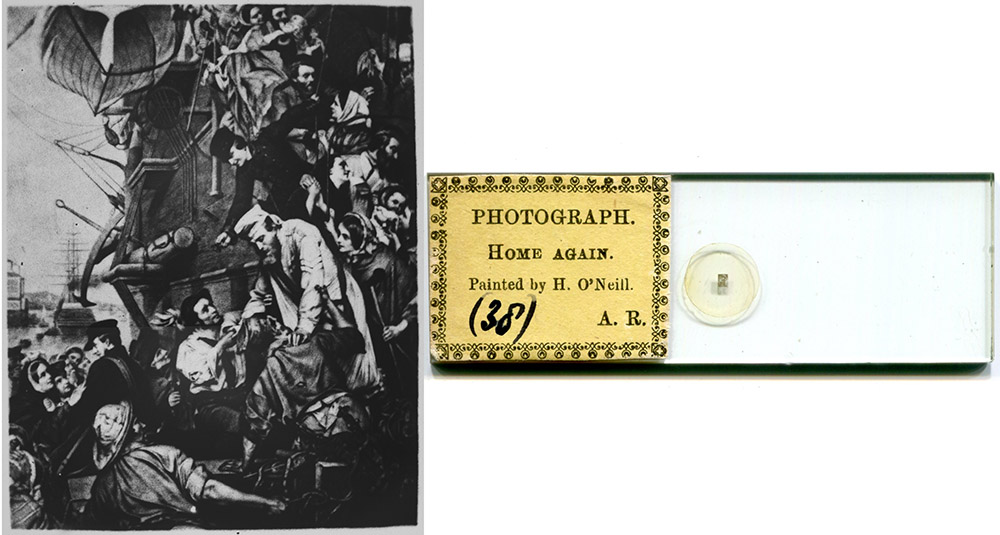
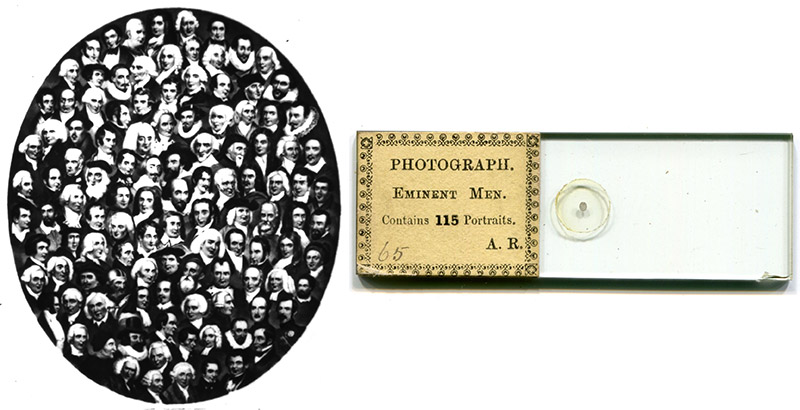
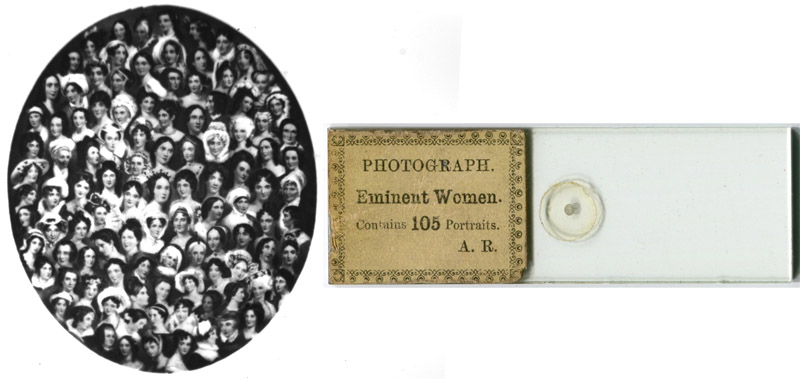
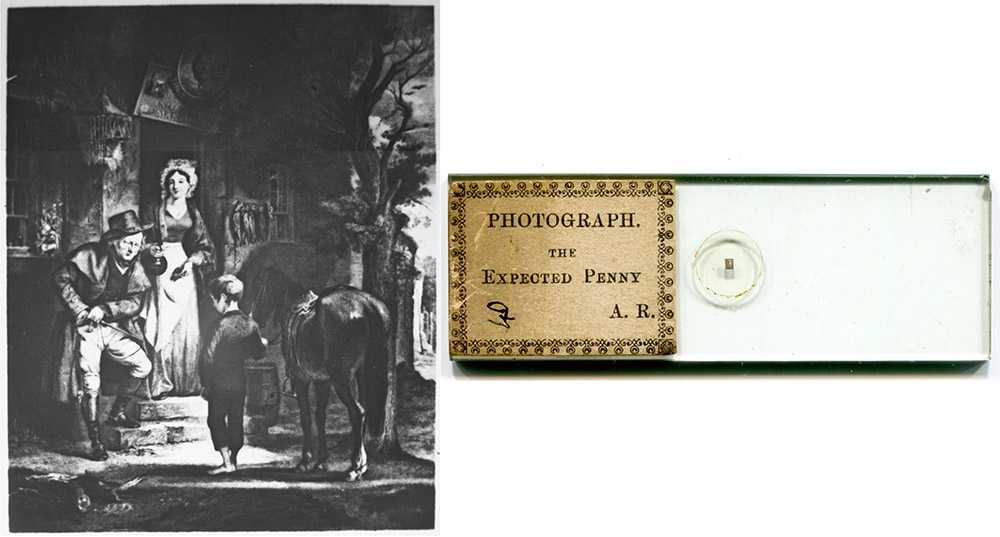
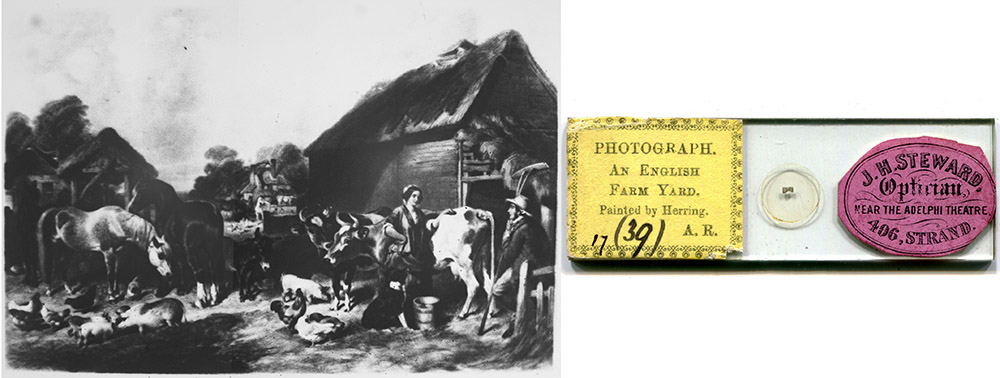


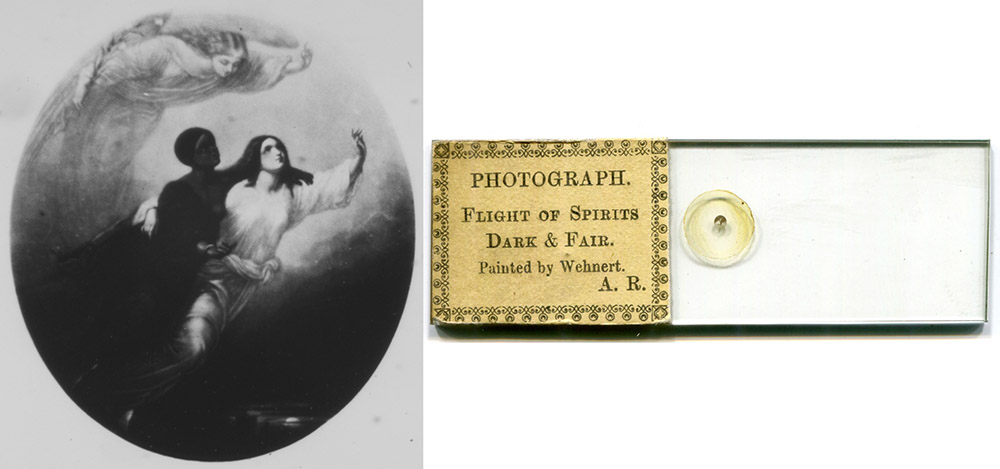

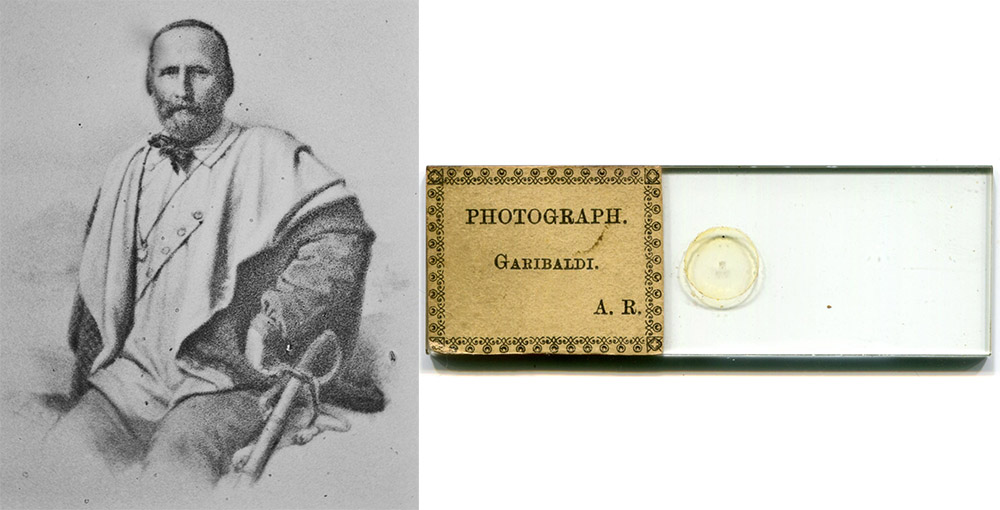
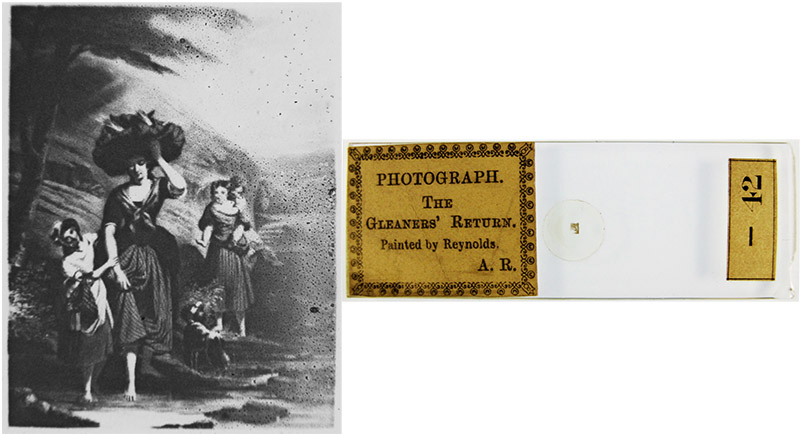

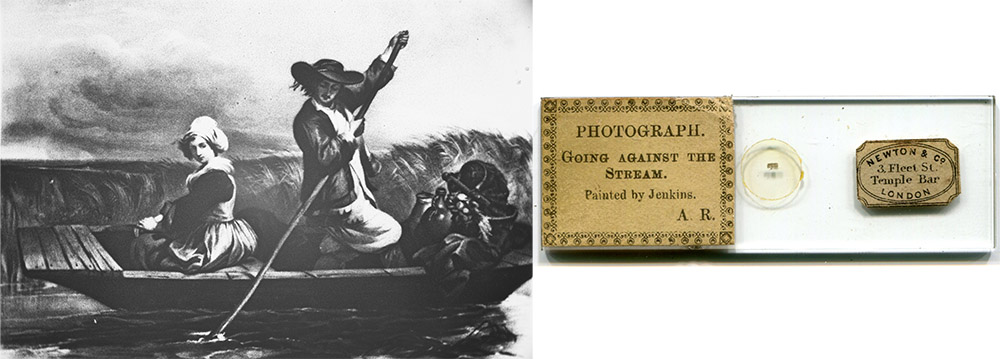
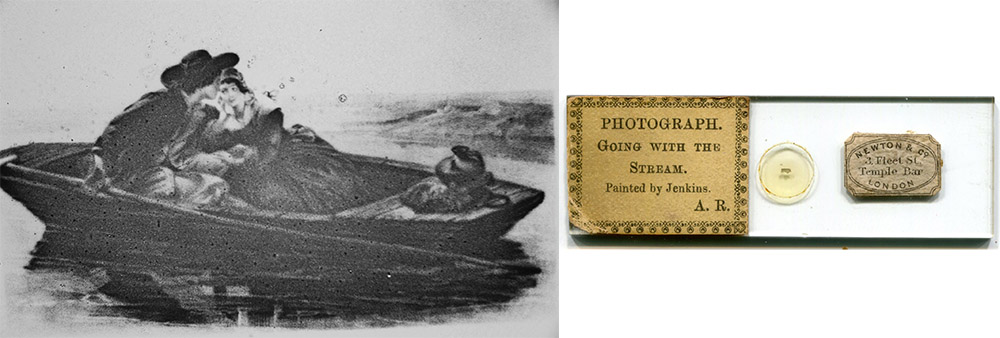
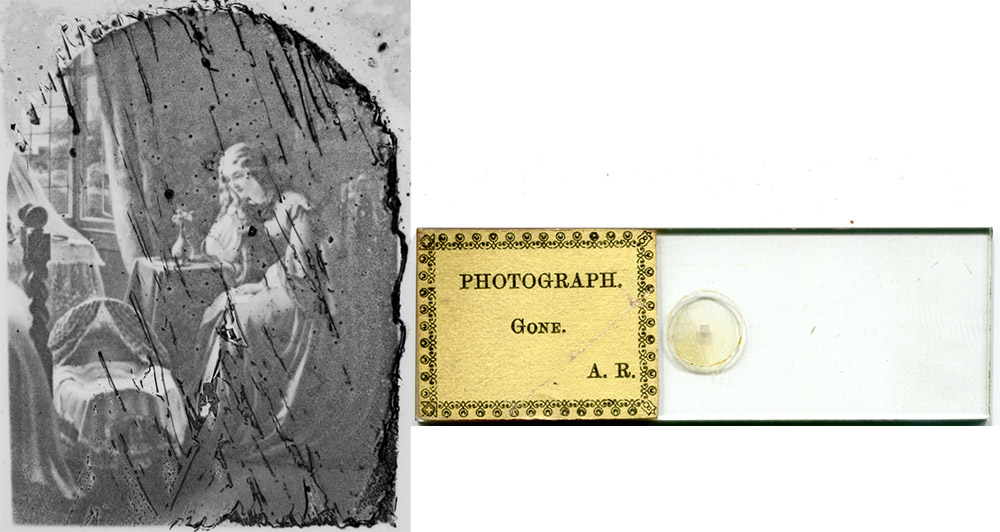

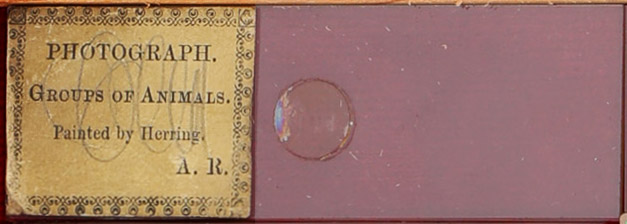
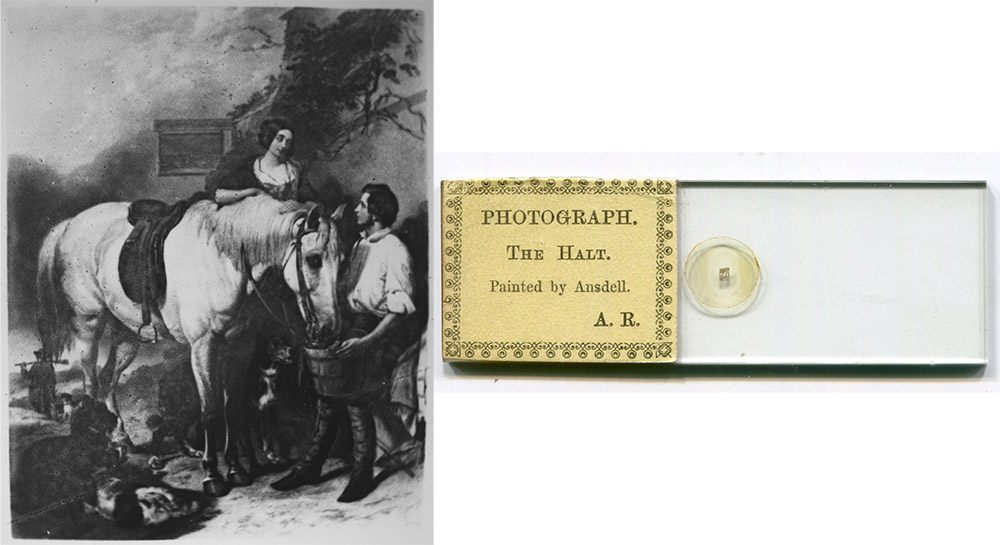
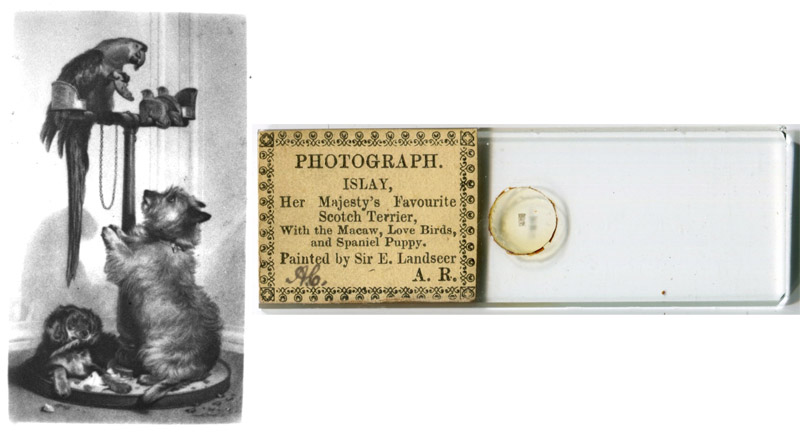
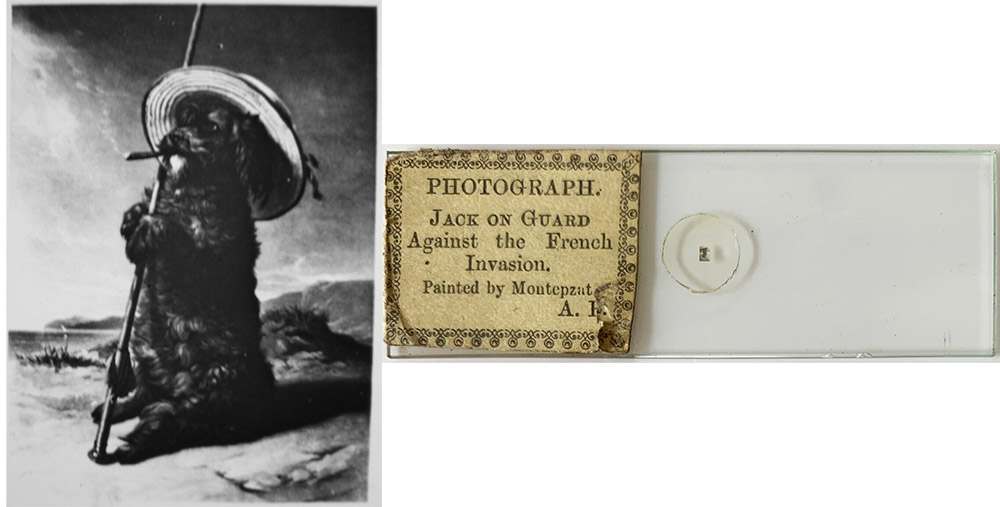
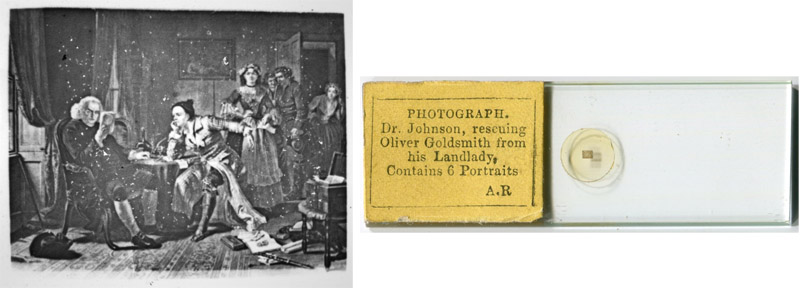
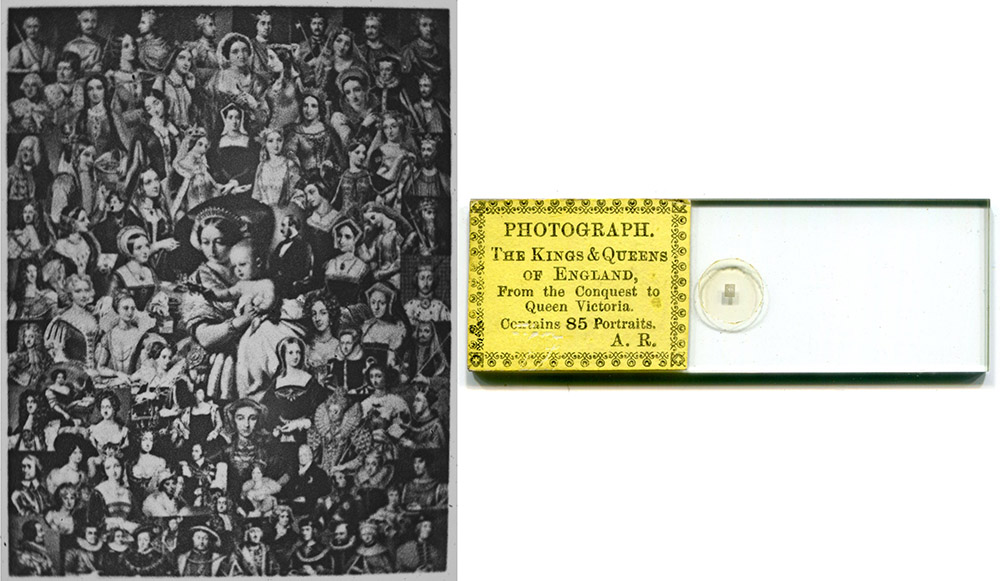
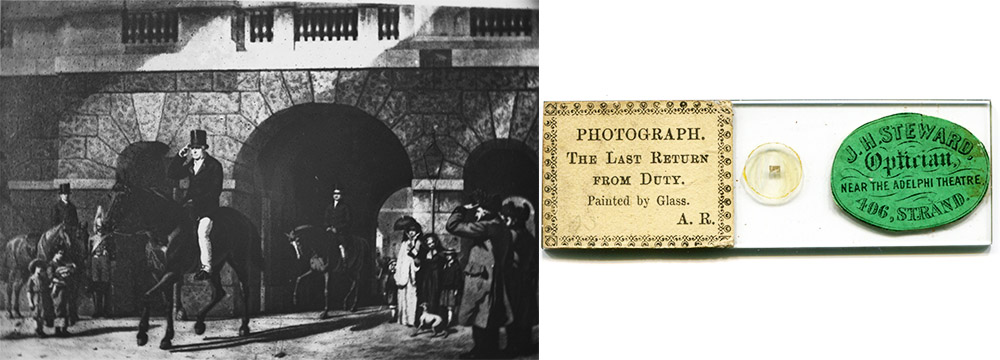
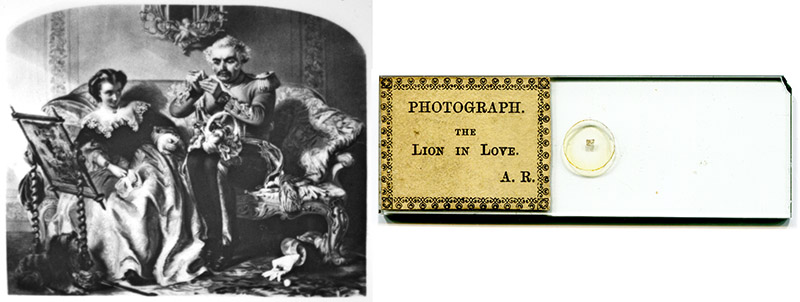
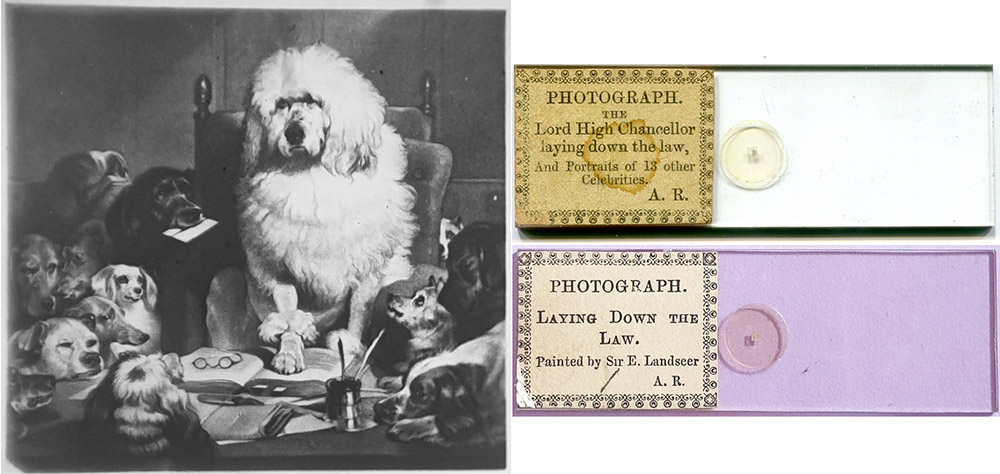
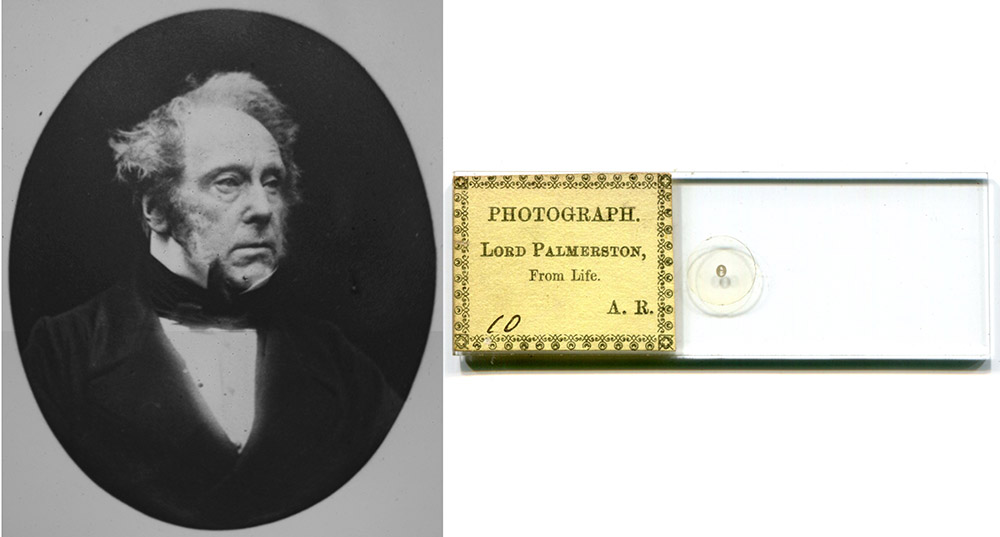
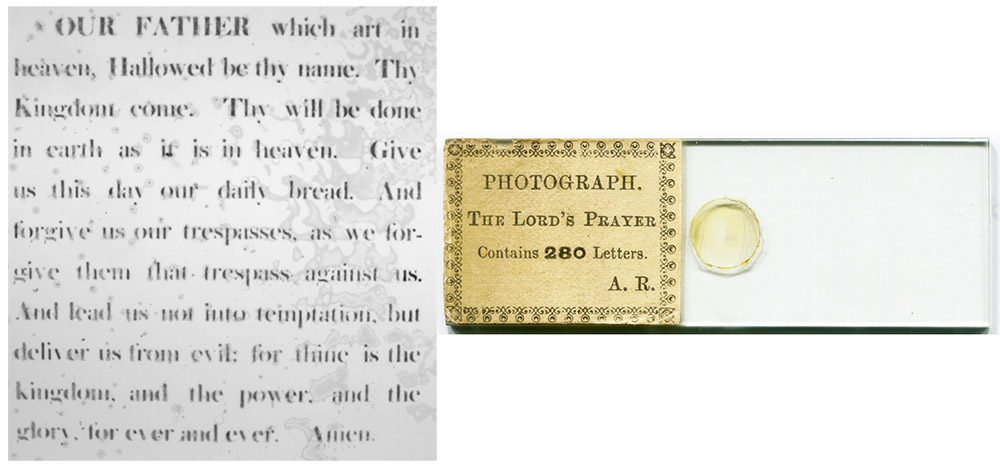
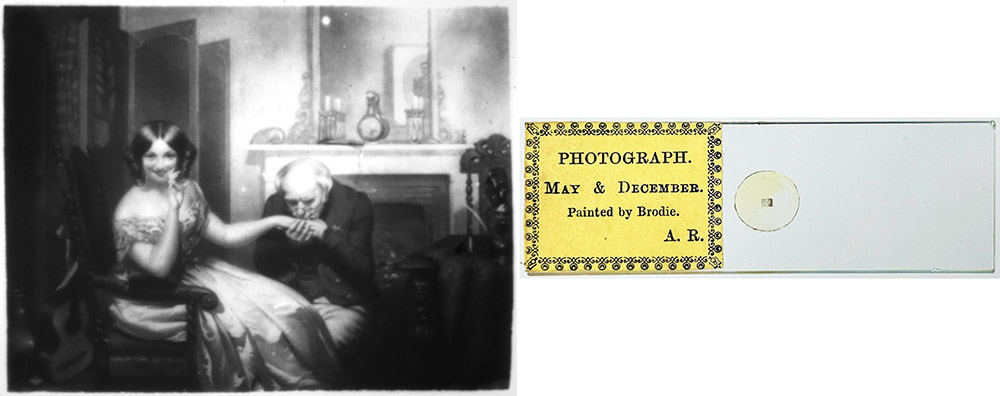
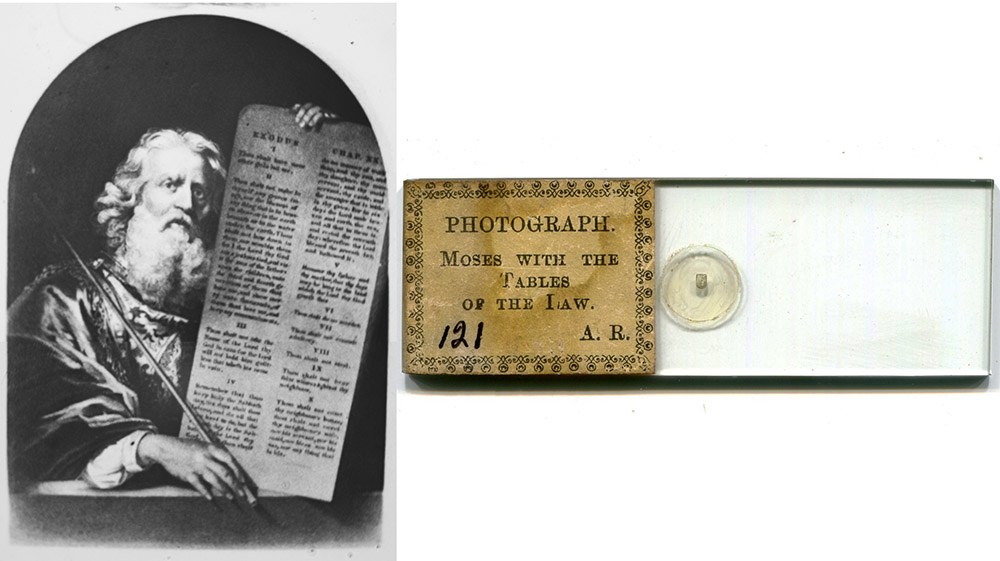



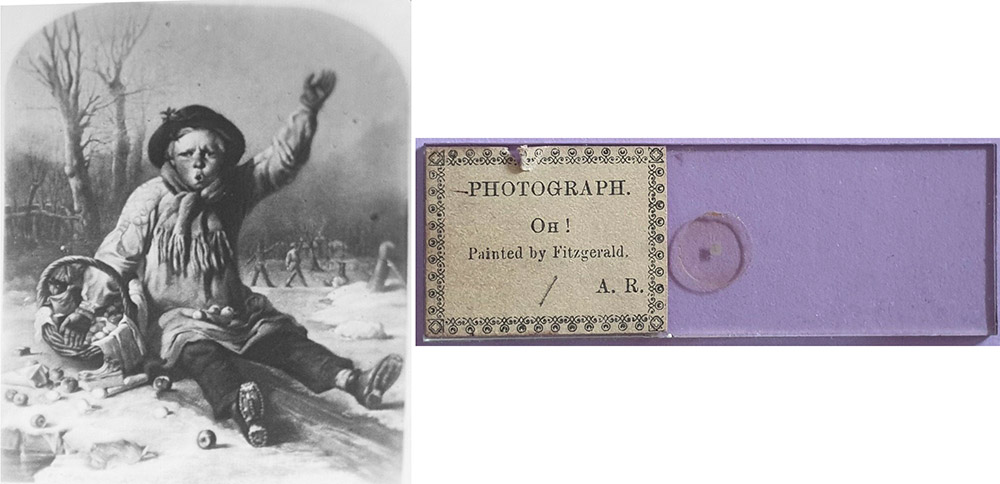
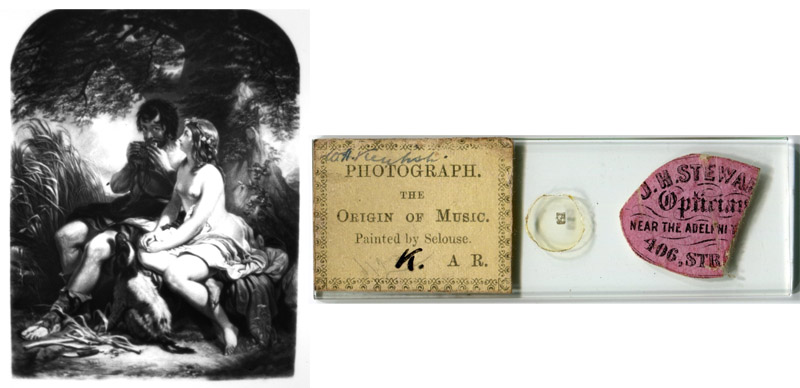
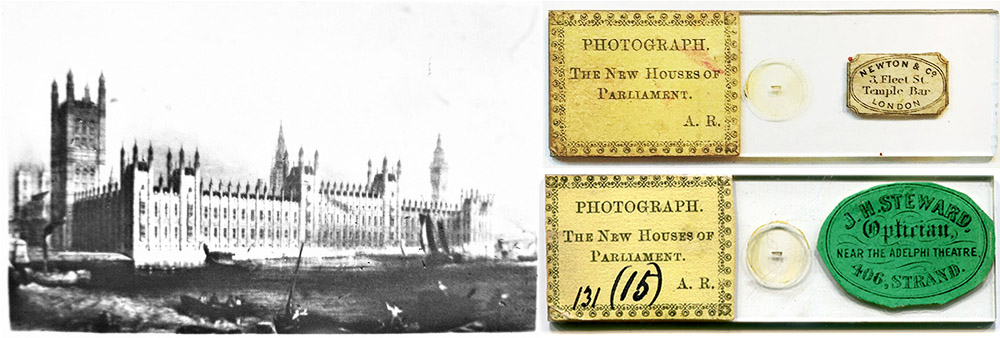
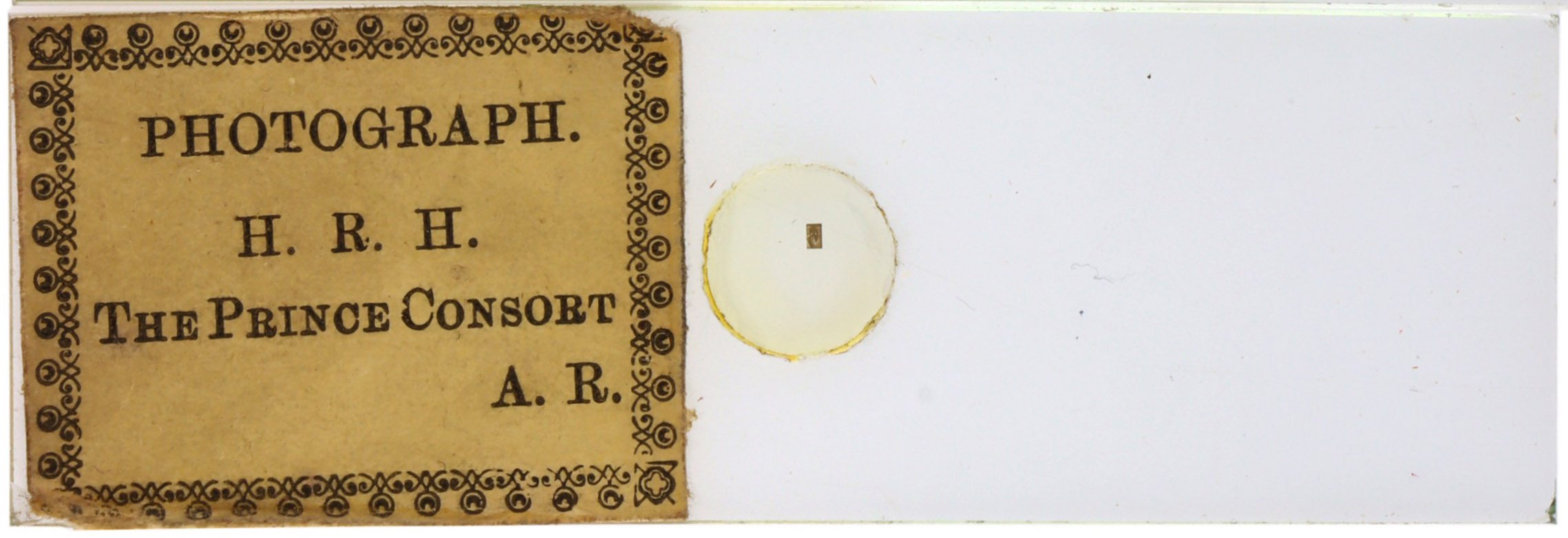


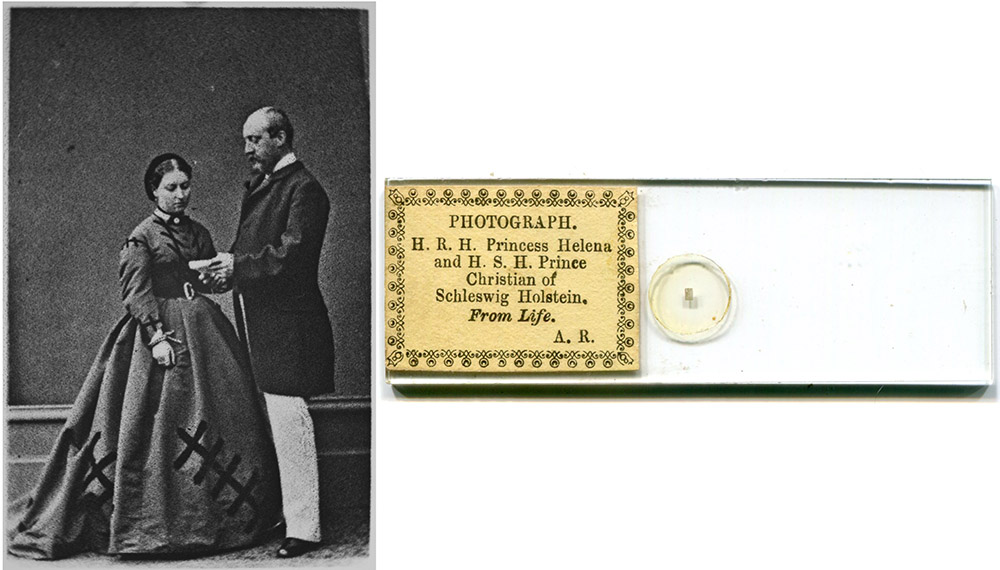

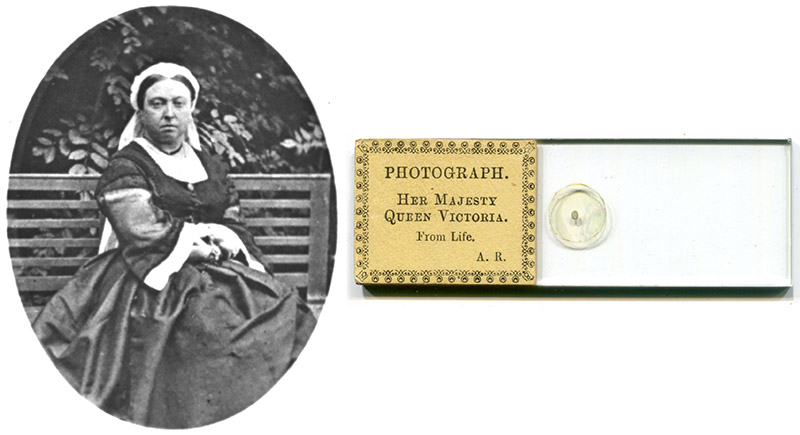
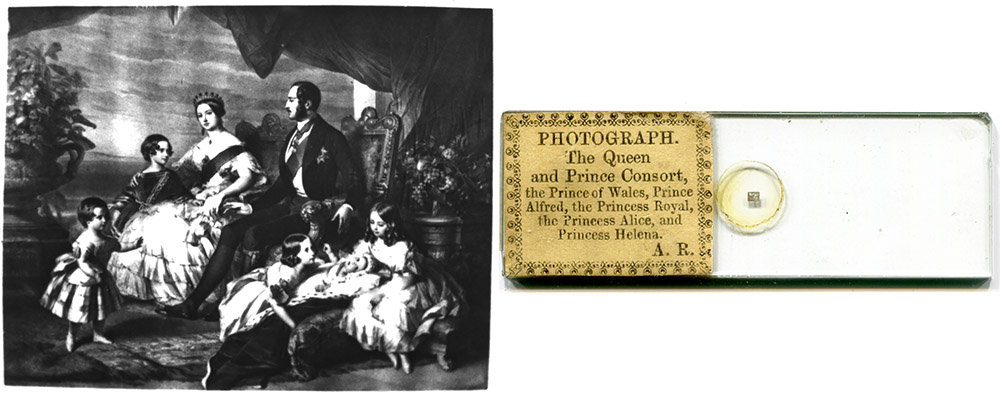
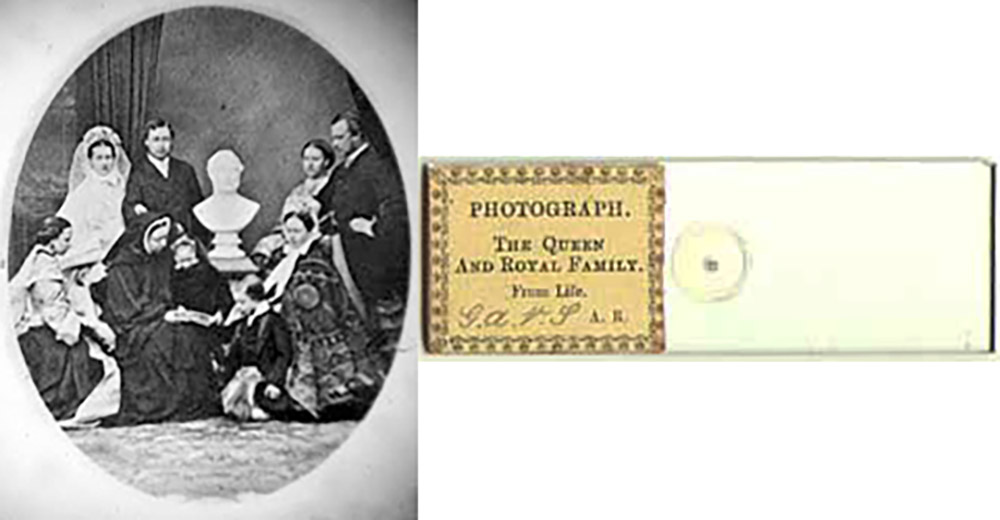
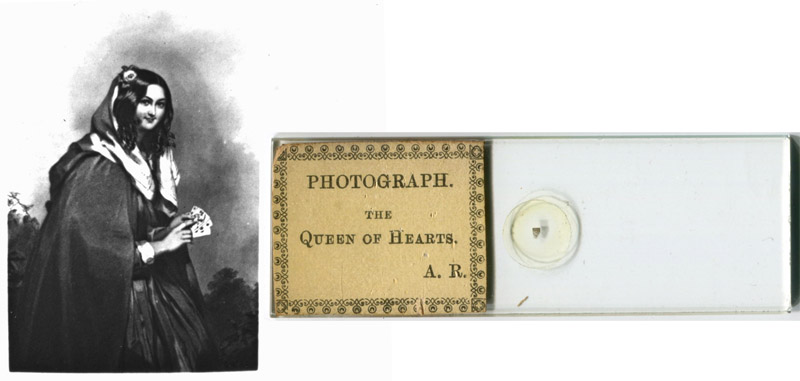
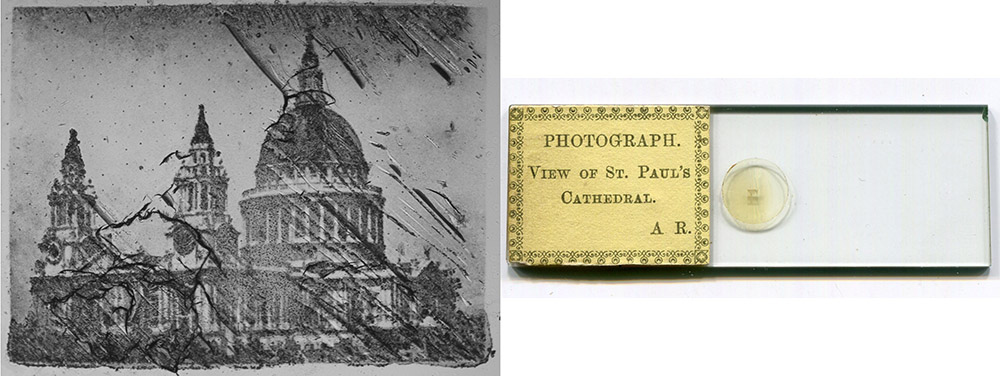
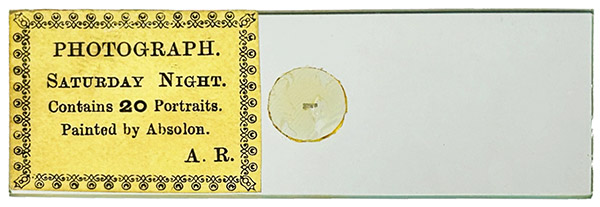
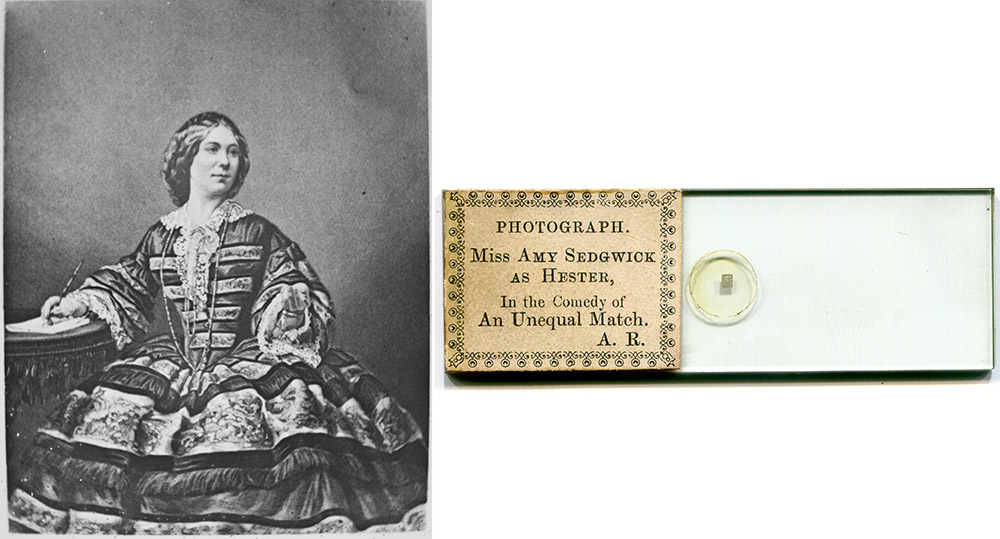

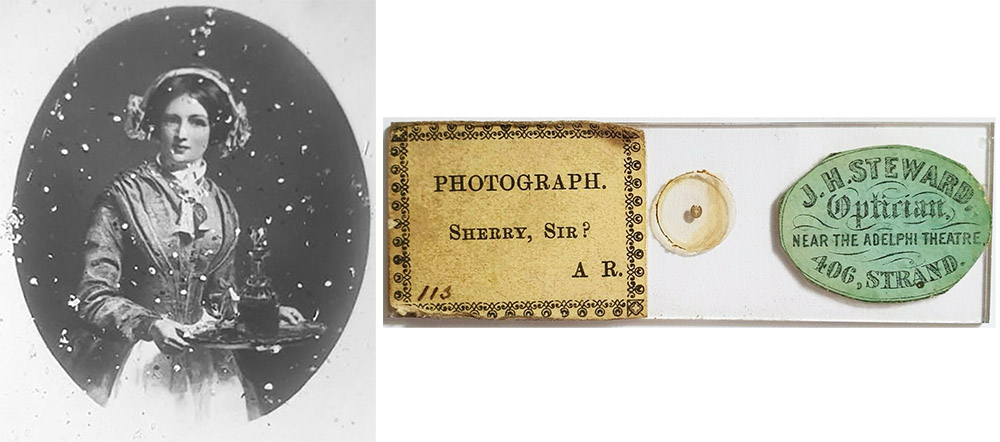


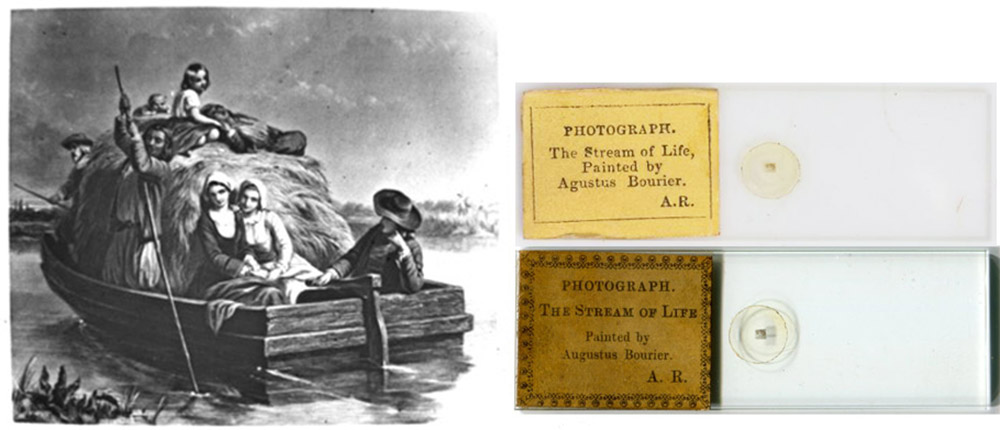


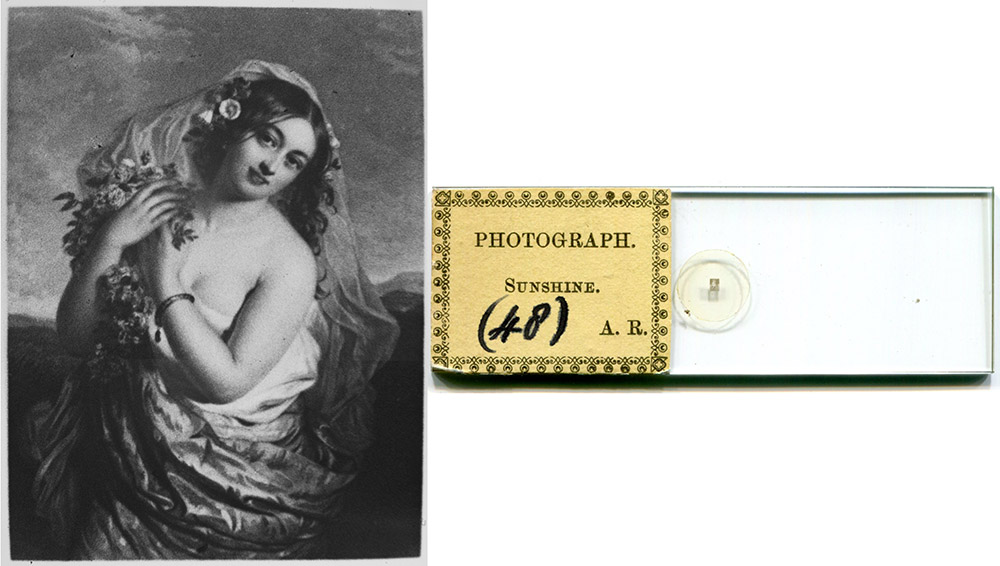
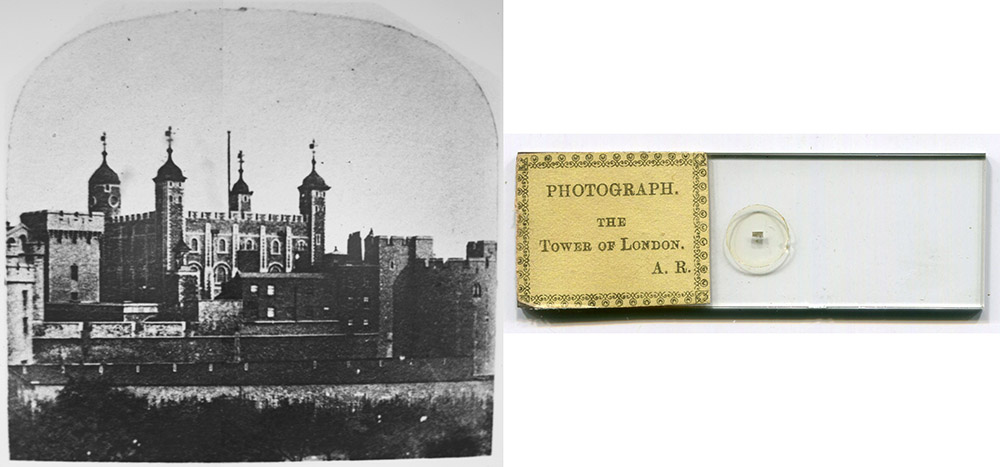
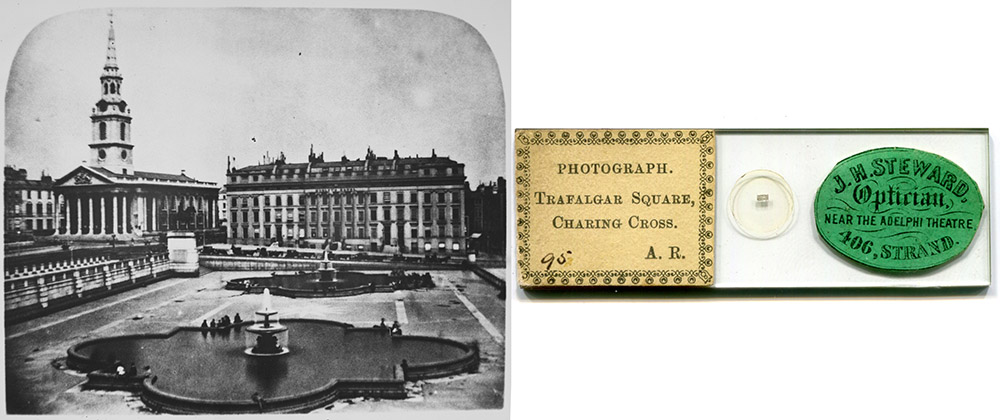
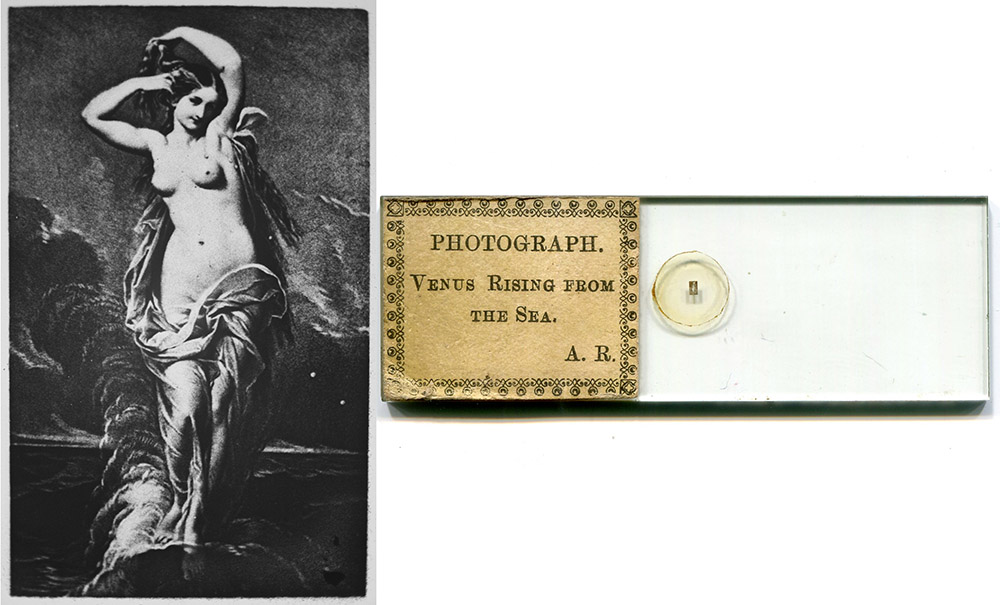


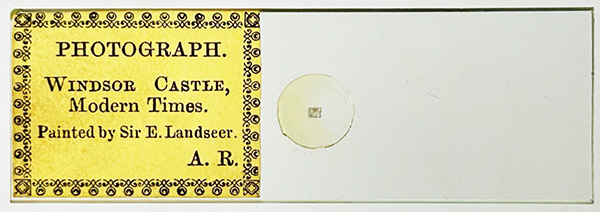
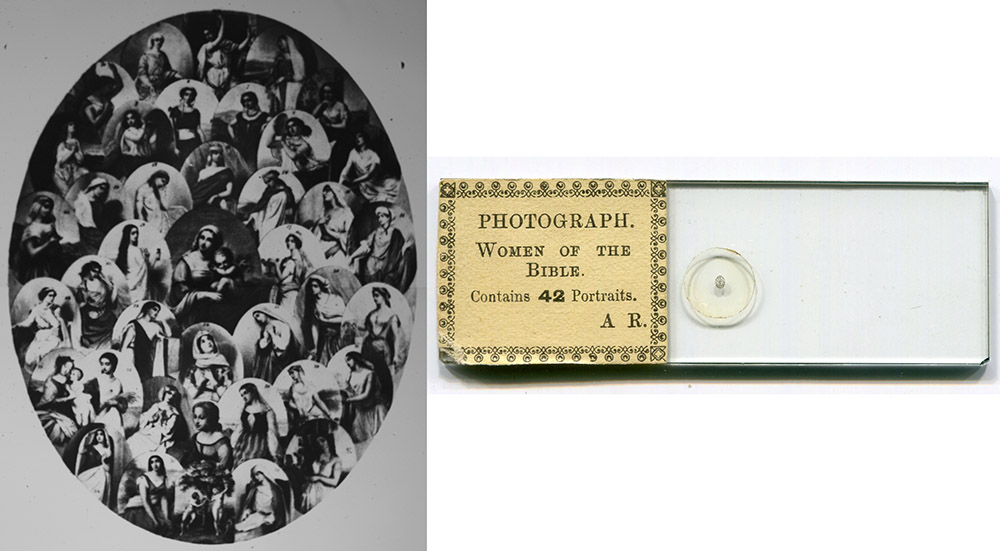
Figure 4. A sampling of images from Alfred Reeves’ microphotographs.
____________________________________________________________
Carte-de-visite (CDV) photographs by Alfred Reeves and his brother, Thomas Saunders Reeves (1819 - ca. 1890). Many of the same studio props appear in multiple photographs.
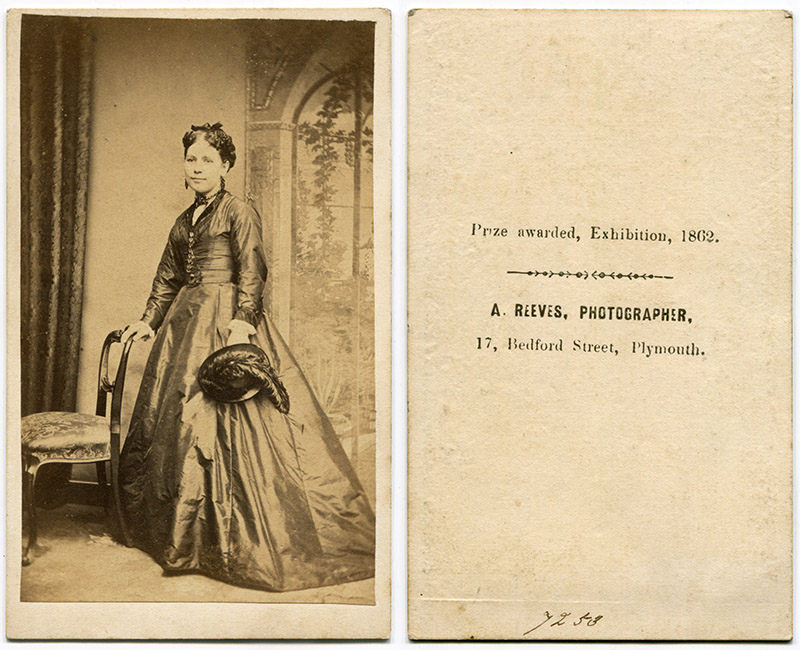
Figure 5. The 1862 prize that Alfred noted was the Honourable Mention for his microphotographs.

Figure 6. CDVs with another style of printing on the reverse, which again notes Alfred Reeve’s 1862 prize.
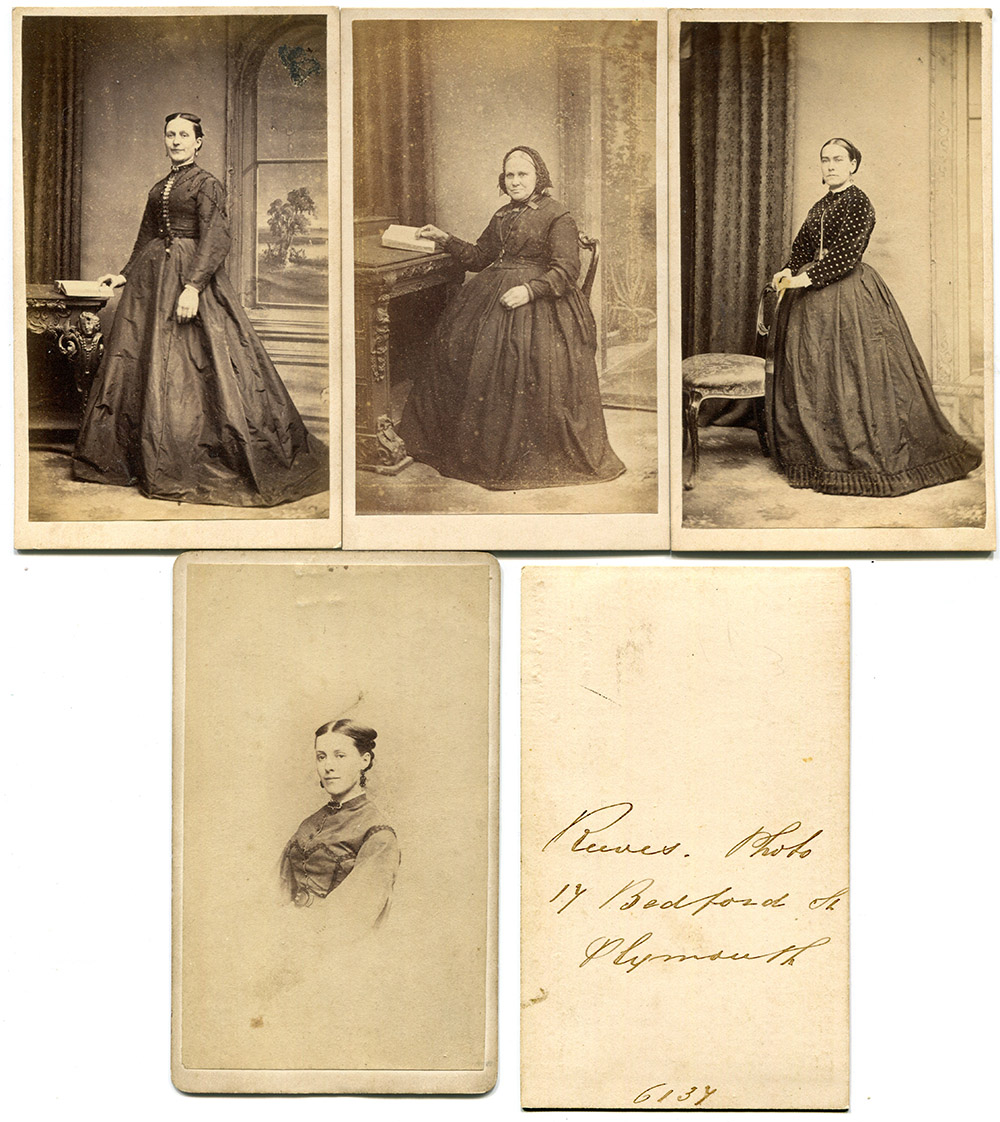
Figure 7. Four CDVs, all of which have "Reeves, Photo, 17 Bedford St, Plymouth" written in hand on the reverse. These may have been produced by either Alfred or his elder brother prior to having printed cardstock (Alfred, ca. 1866 or Thomas, ca. 1860).
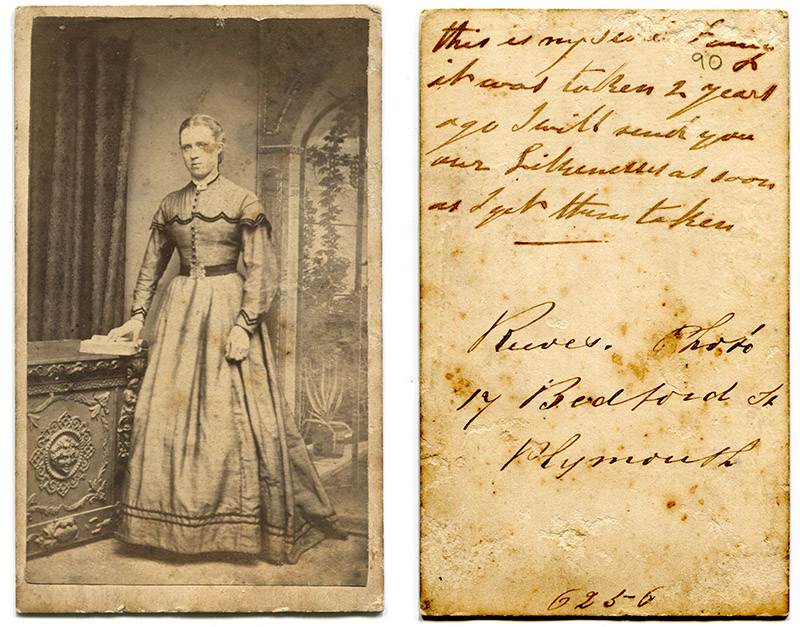
Figure 8. Another CDV with handwritten "Reeves, Photo, 17 Bedford St, Plymouth" on the back. An early owner wrote, “this is my sister Fanny it was taken 2 years ago I will send you our likenesses as soon as I get them taken”.
Alfred’s eldest brother, Thomas Saunders Reeves (1819 - ca. 1890), was also a professional photographer, although there is no evidence to suggest that he produced microphotographs. It is probable that the two brothers worked together at times. Thomas operated a photographic studio at 498 Oxford Street, London from at least 1850 until 1855, then relocated to 18 King William Street, Charing Cross. He moved to Plymouth ca. 1858, and operated the studio at 17 Bedford Street until 1867. Alfred then took over the Plymouth business. Thomas Reeves became a member of the Photographic Society (also known as the Photographic Society of London) in 1862, while Alfred does not appear to have been a member, so photographed labeled as "Reeves" and "M.P.S." or "M.P.S.L." can be attributed to Thomas Reeves. Examples of Thomas’ photographic work are shown in the following figures.
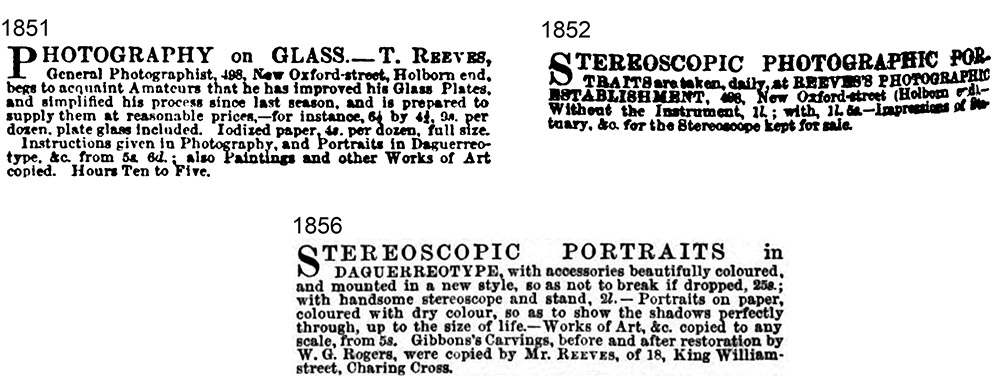
Figure 9. Advertisements from Thomas Reeves for his London photographic studios. All from "The Athenaeum".
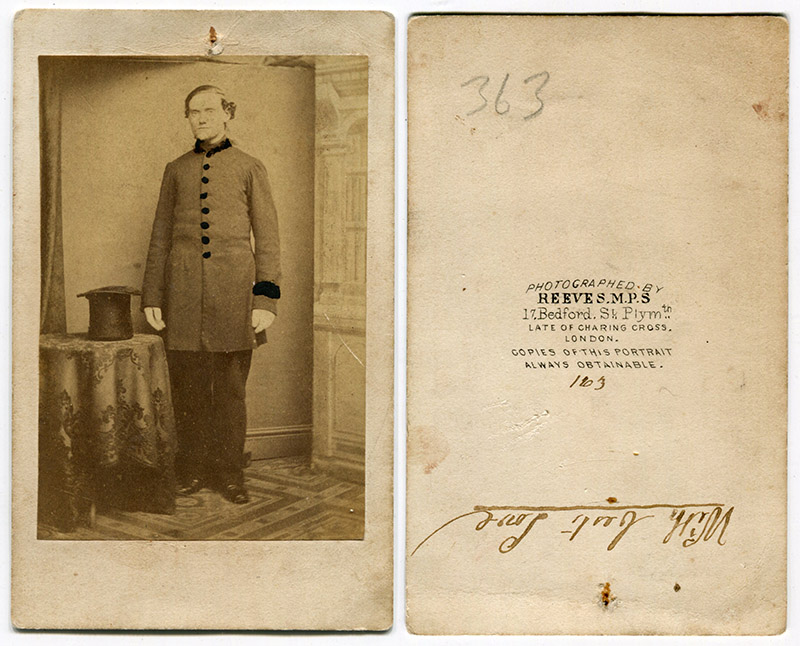
Figure 10. Thomas Reeves became a member of the Photographic Society in 1862, which is indicated on the reverse of this CDV as "M.P.S.". The printing also noted Thomas Reeves' previous studio at Charing Cross.
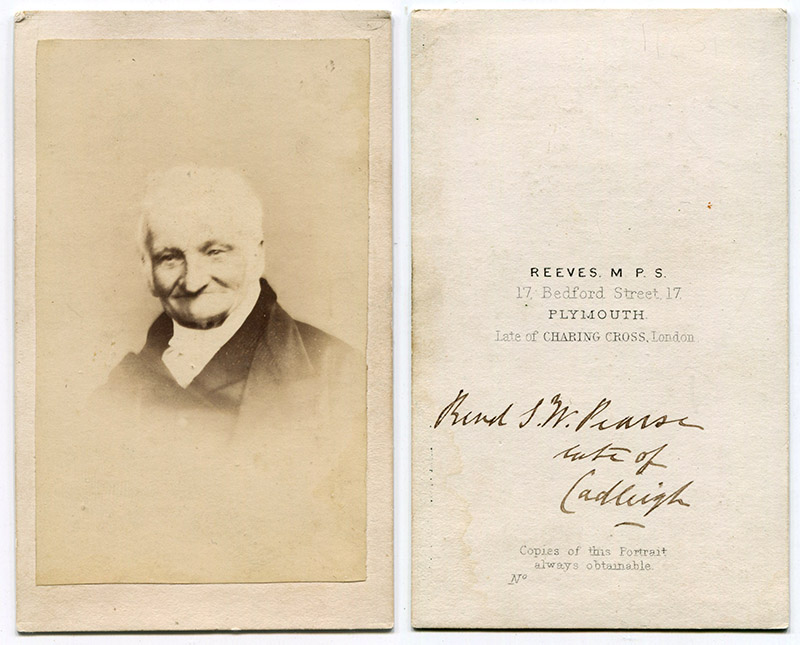
Figure 11. Another Thomas Reeves CDV, with a slightly different version of the printing on the reverse.
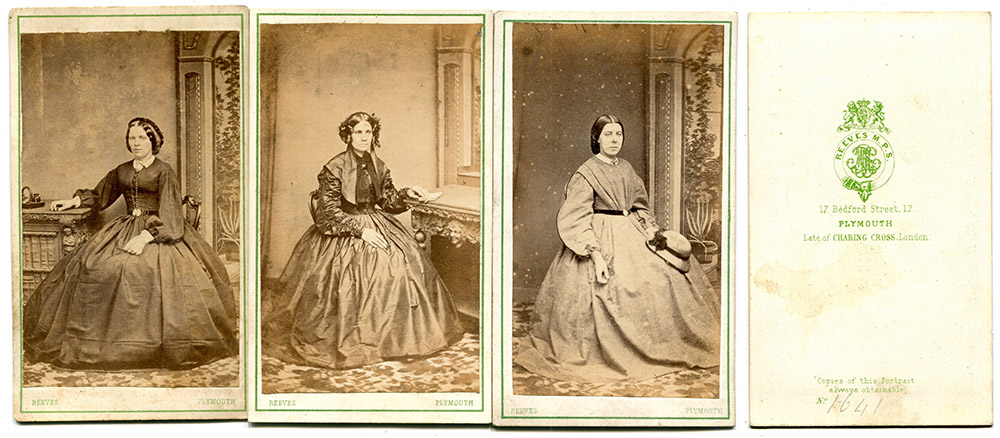
Figure 12. A vignetted CDV by Thomas Reeves, “late of Charing Cross, London”. The handwriting on the back reads, "Revd S.W. Pearse, late of Cadleigh" (Cadeleigh is a town in Devon, some 10 miles / 16 km east of Plymouth).
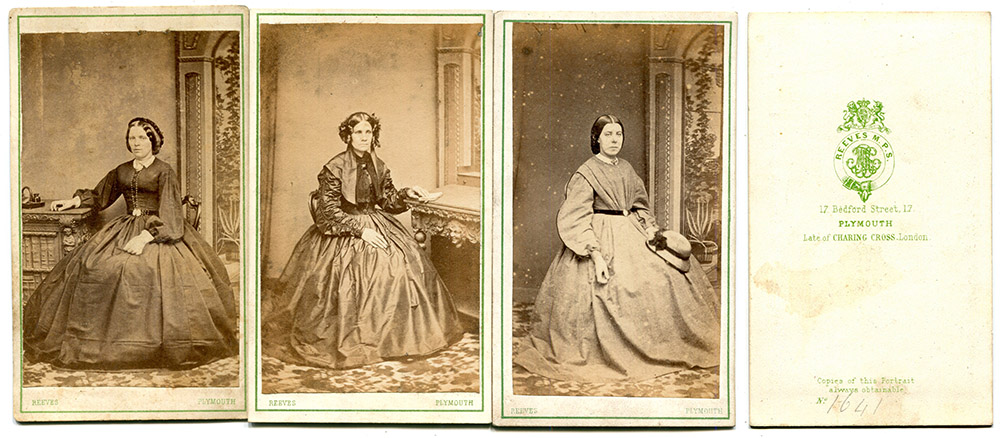
Figure 13. Three Thomas Reeves CDVs, with a different pattern on the reverse. It also states “late of Charing Cross, London”, with "M.P.S." and the lion and unicorn indicating the royal patronage of the Photographic Society that was awarded in 1853.
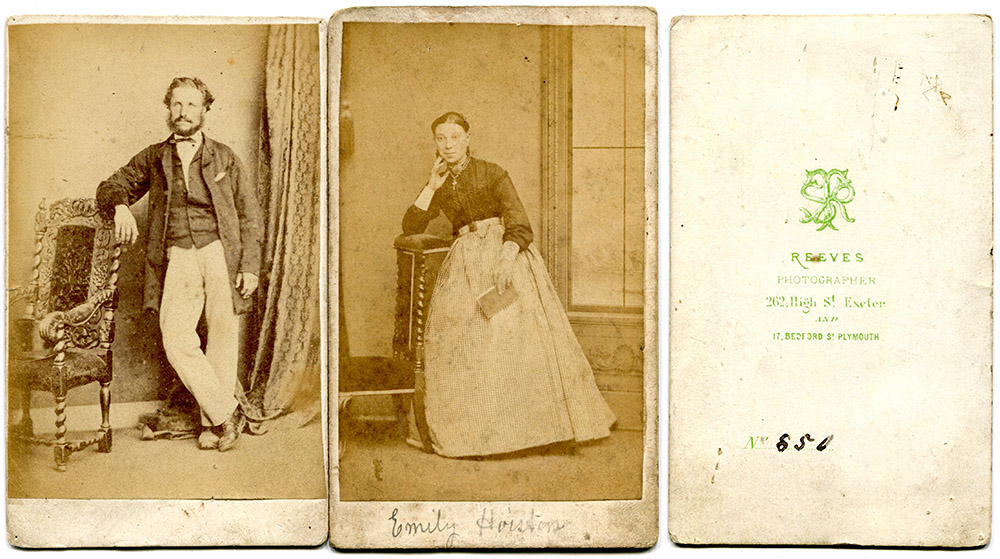
Figure 14. Another Thomas Reeves CDV, with a similar reverse. The banner states "M.P.S.L.", for Member of the Photographic Society of London.
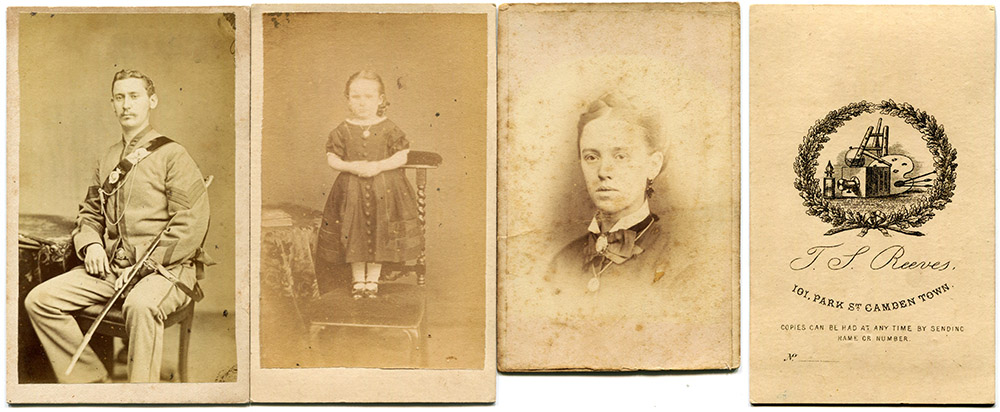
Figure 15. Two CDVs by Thomas S. Reeves: the monogram is "TSR". Thomas moved from Plymouth to Exeter in approximately 1867, and operated a studio there until 1871. The listing of both the Plymouth and Exeter addresses suggests that this photograph was taken during the period of his transition between those towns. The chair in the left photograph is also seen in CDVs that were made by Alfred (see above). The woman in the right photograph is leaning on a piece of furniture that was also used for a CDV taken at Thomas’ later location in Camden Town, London (see below).
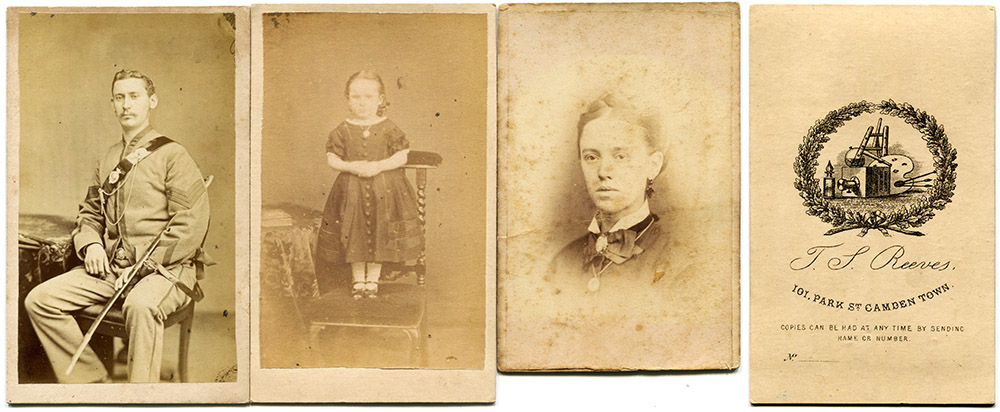
Figure 16.
CDVs by Thomas Reeves, 101 Park Street, Camden Town, London. He operated from this address between 1871 and 1880.

Figure 17.
A CDV by "T. Reeves", 232 Pentonville Road, London. Our Thomas Reeves is not known to have operated from this address, and I have not found published records of another "T. Reeves" operating from this or any other London address. A small mystery!
Acknowldegments
Many thanks to David Evans, Brian Davidson, Geoff Goldberg, Reg Porter, and Stanley Warren for their assistance.
Resources
The Athenaeum (1851) Advertisement from Thomas Reeves, page 441
The Athenaeum (1852) Advertisements for stereoscopic photographs from "Reeves's Photographic Establishment" of 498 Oxford Street, page 594
The Athenaeum (1856) Advertisements for stereoscopic photographs from "Mr. Reeves" of 18 King William Street, Charing Cross, pages 1074 and 1518
The Athenaeum (1858) Advertisement from Henry Hering, December 4 issue, page 704
The Bookseller (1862) Advertisement from Henry Hering, Number 53, May 31, page 349
Bracegirdle, Brian (1998) Microscopical
Mounts and Mounters, Quekett Microscopical Club, London
British Hat Guild, a history of British hat manufacturing
The British Journal of Photography (1864) Notice of a new microphotograph from Alfred Reeves, Vol. 11, page 122
Kelly’s Directory of
Bedfordshire (1890) page 99, accessed through http://www.historicaldirectories.org
Medals and Honourable
Mentions Awarded by the International Juries (1862) pages 208 and 438
England vital statistics, accessed through www.ancestry.co.uk
Lancet (1856) Advertisement for "anatomical preparations, drawings, &c. copied by photography on paper" by "Reeves", 18 King William Street, Charing Cross, October 4 advertiser section
National Portrait Gallery information on the Henry Hering cdv, http://www.npg.org.uk/collections/search/portrait/mw136443/The-Kings-and-Queens-of-England-From-the-Conquest-to-Queen-Victoria
Official Catalogue of the Industrial Department, International Exhibition (1862) "Reeves, A. 257, Tottenham Court-rd, - Microscopic photographs and microscope", (page 51)
The Photographic Journal (1864) Report of Jurors, pages 67-68
The Photographic News (1859) vol. 2, page 15
The Photographic News (1875) vol. 19, page 528
Reeves, Thomas (1858) On the distortion of large lenses, Journal of the Photographic Society, page 137 (sent from Bedford Street, Plymouth)
Warren, Stanley (2007) Initials on microphotographs – thoughts
on AR, Micro Miscellanea, Summer issue, no. 66, pages 20-29
Warren, Stanley (2009) Studying microphotographic slides, an
update to current knowledge, Journal of the Microscope Historical Society., Vol. 17, pages 35-50
Warren, Stanley (2014) Alfred Reeves (A.R.) re-visited, Micro Miscellanea, In press




































































































